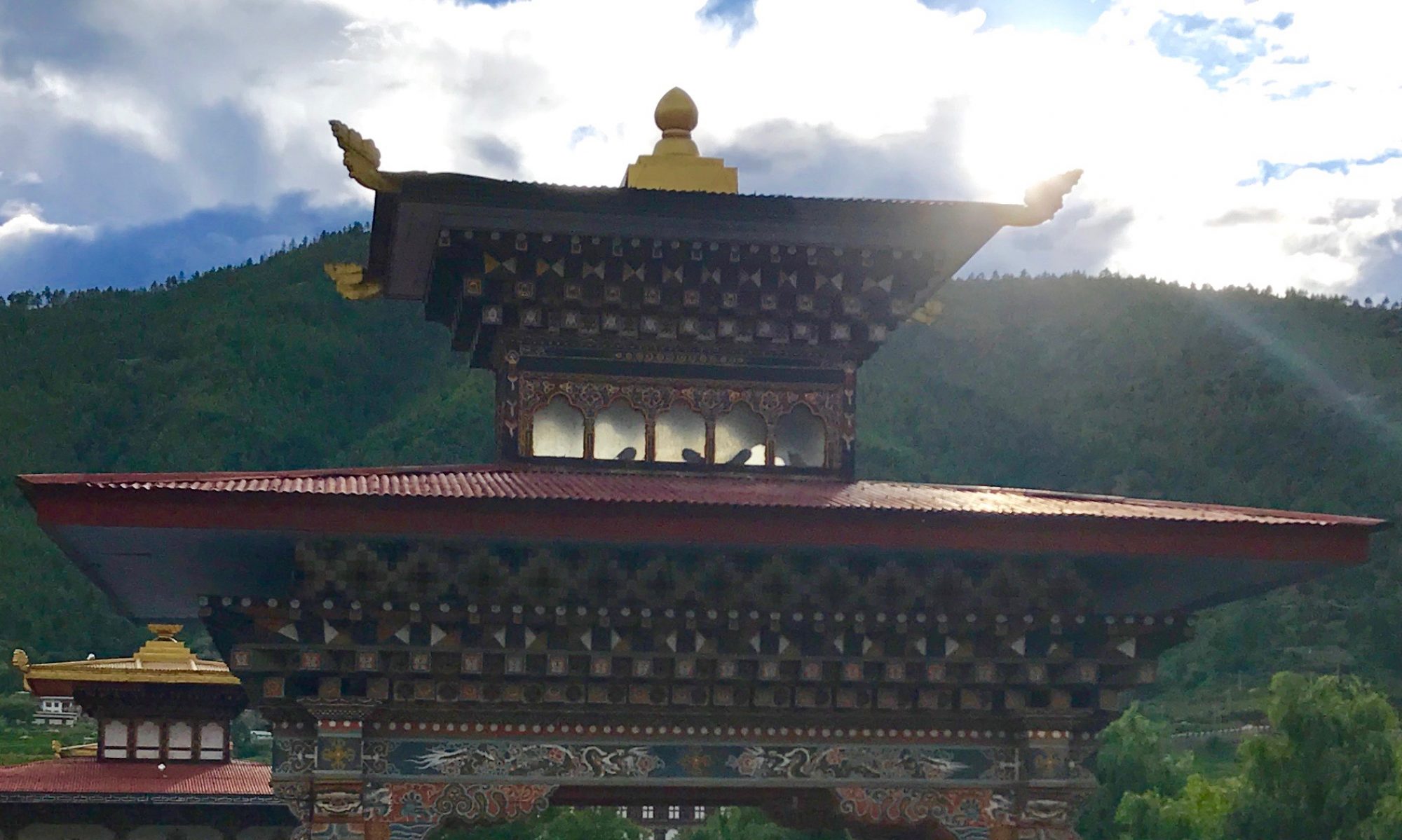I’m not sure our vacation time counts toward “the great happiness,” but it definitely helped with little happinesses along the way. Here are some highlights of our time in Nepal.
First, there was the flight from Paro to Kathmandu. One is not supposed to take photos while flying for fear of disrupting the pilot’s controls, but everyone on the plan had phones up to the windows. I liked seeing the monasteries perched on high, and the great river down on the Indian plain–
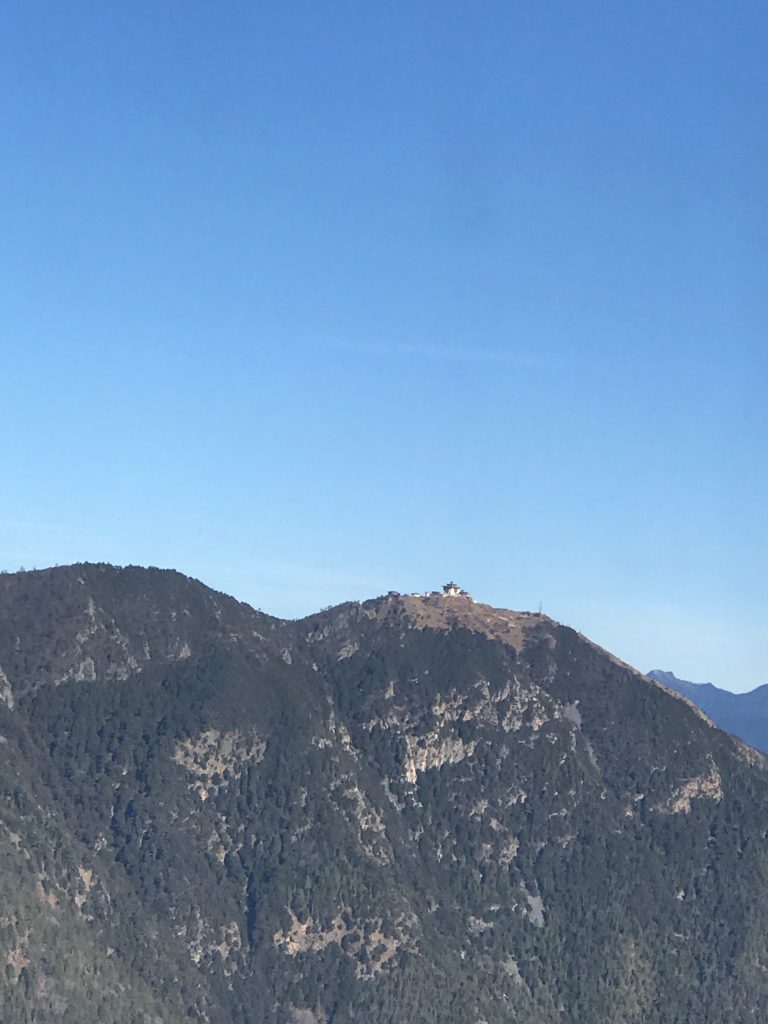
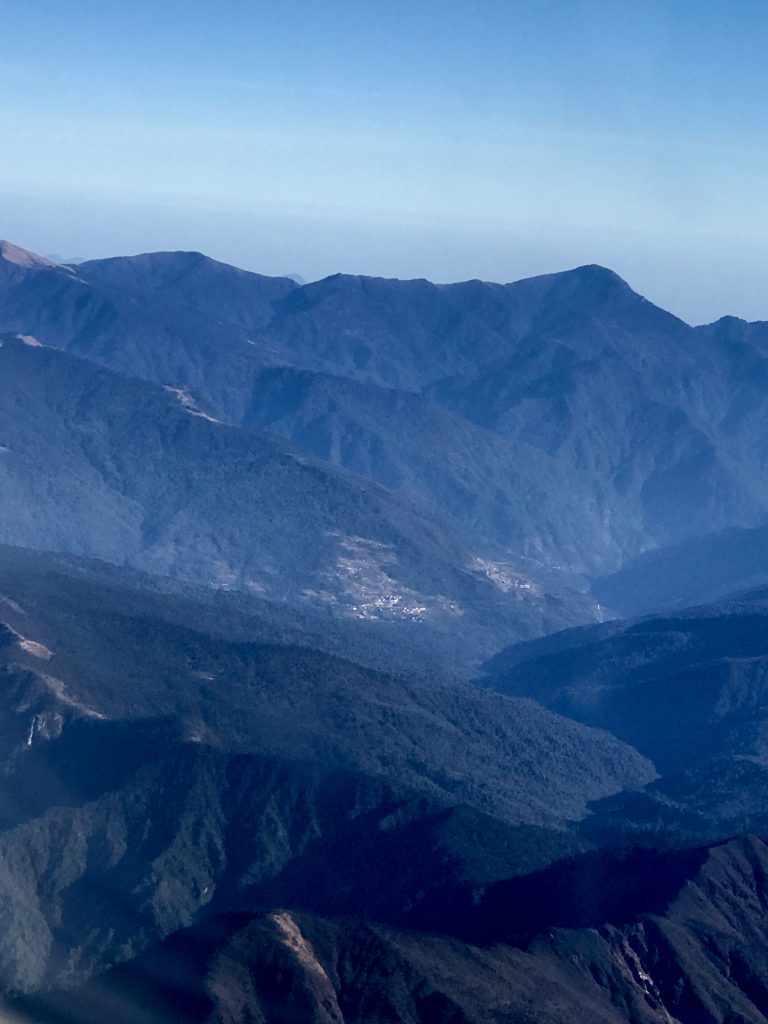

–but Zoë and James were the ones seated on the good side of the plane, with beautiful vistas of Everest and the Himalayas:
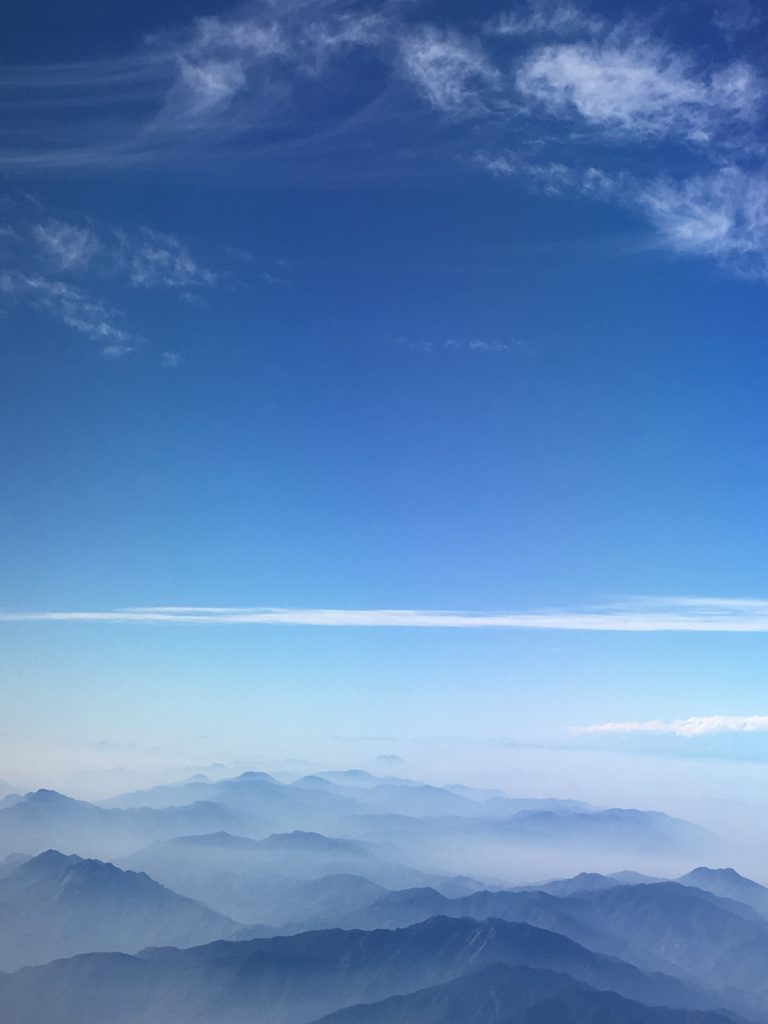
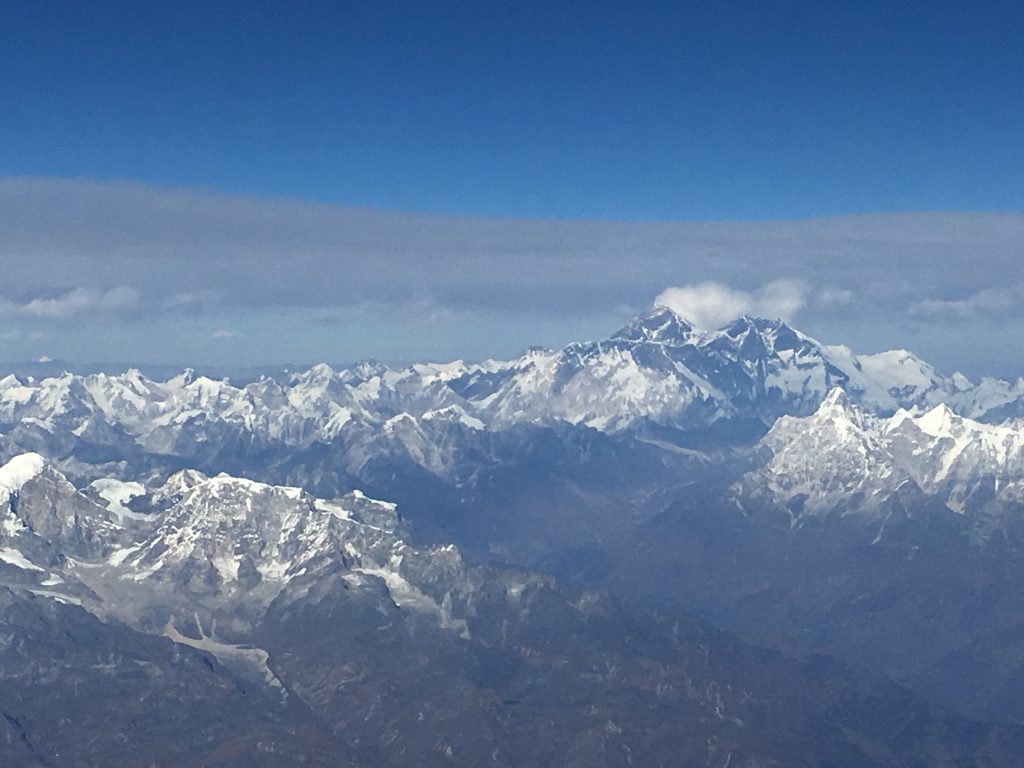
We spent a night in Kathmandu, where the air pollution came as something of a shock–and the water coming out of the tap at the hotel was a deeper brown even than we were used to from the rainy season in Bhutan. We had dinner at Fire and Ice, which had seriously good pizza. Zoë noted that she hadn’t seen so many white people in 5 months. We were also struck by the impetuosity of the electrical wiring on the streets.
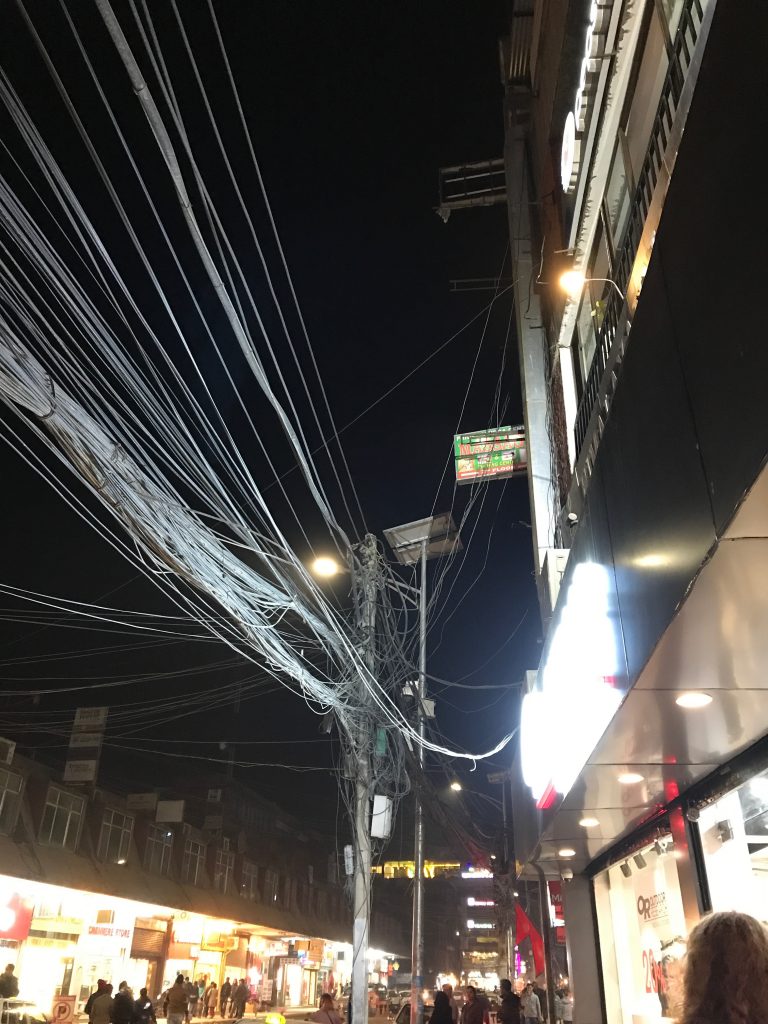
Then we got up in the early morning to catch a bus to the river for rafting on the Trisuli.
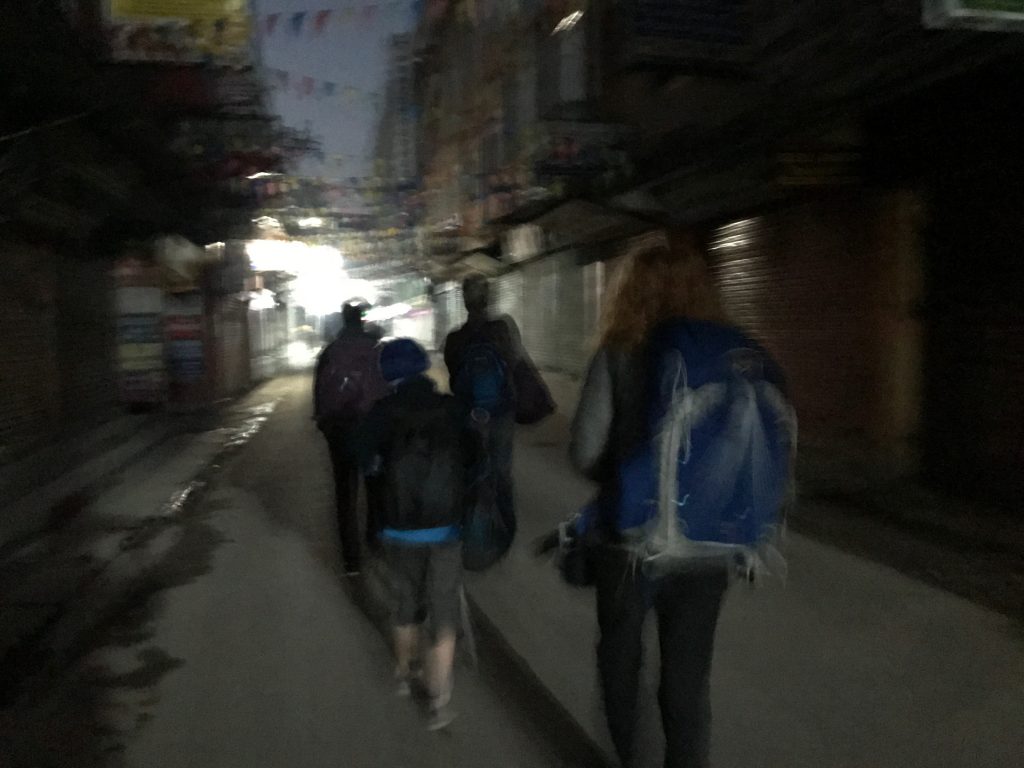
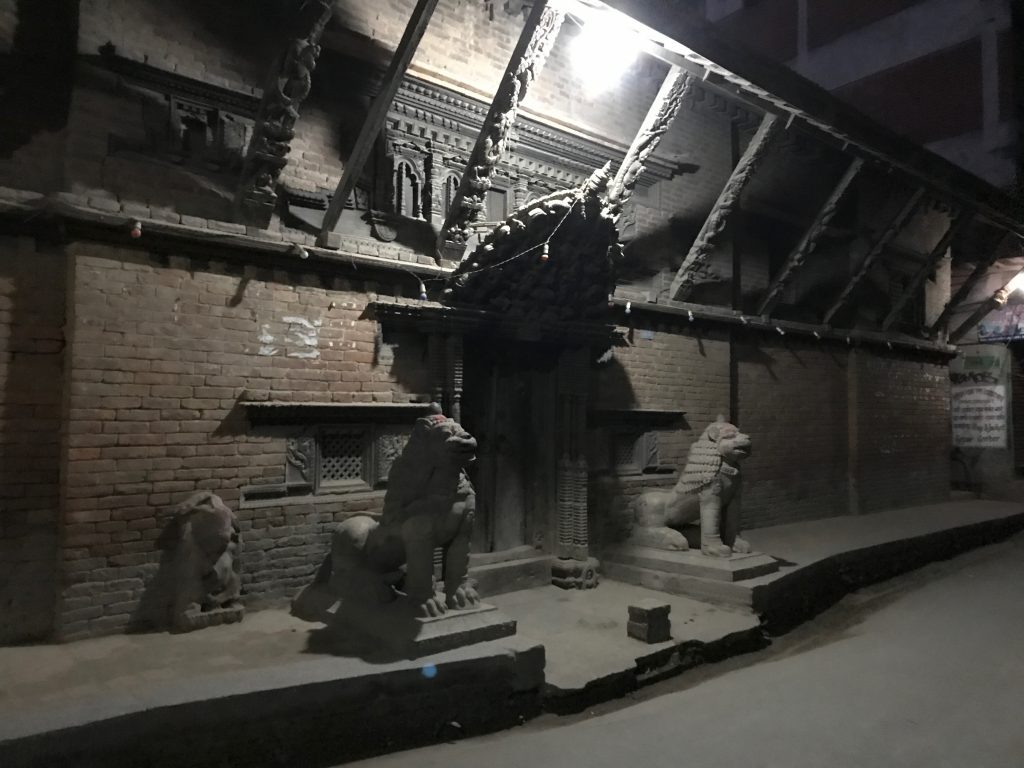

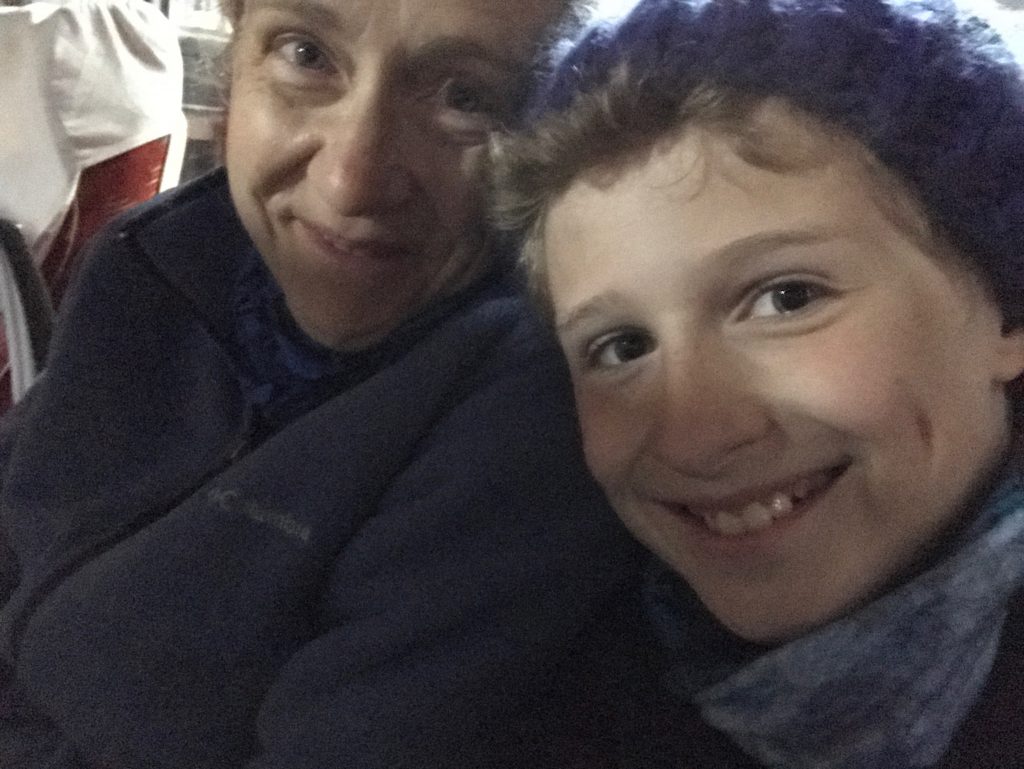
We had such fun, though the evidence of that delight is a little scanty. We loved seeing the wire crossings over the river–especially when people were making the crossing.
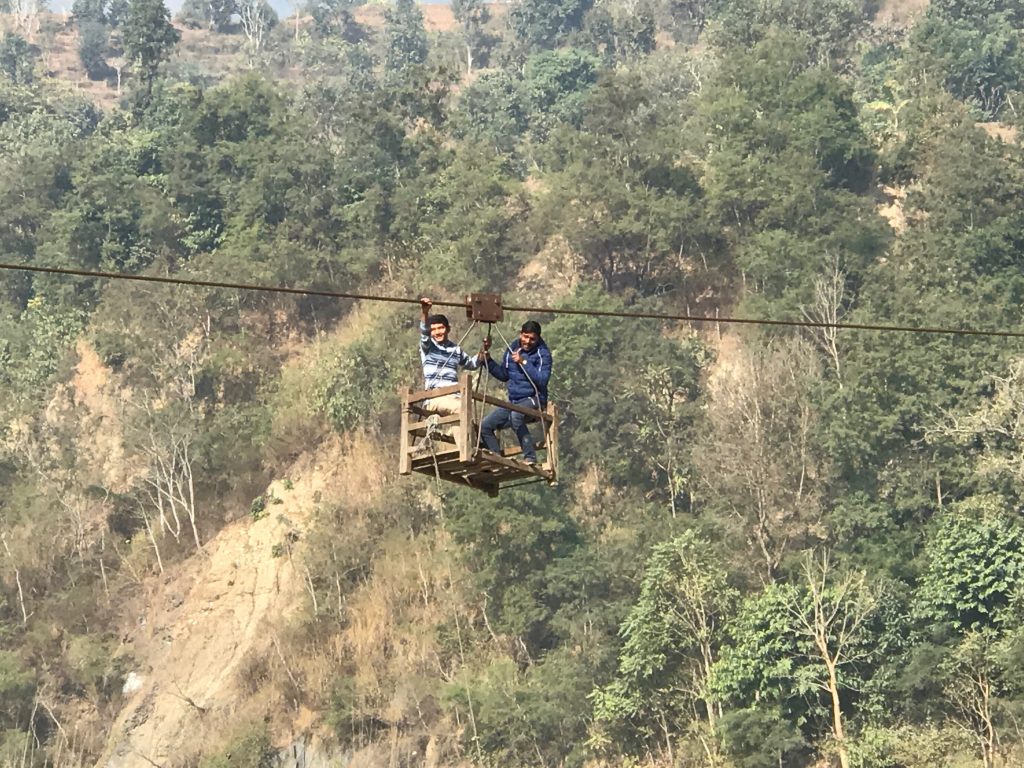
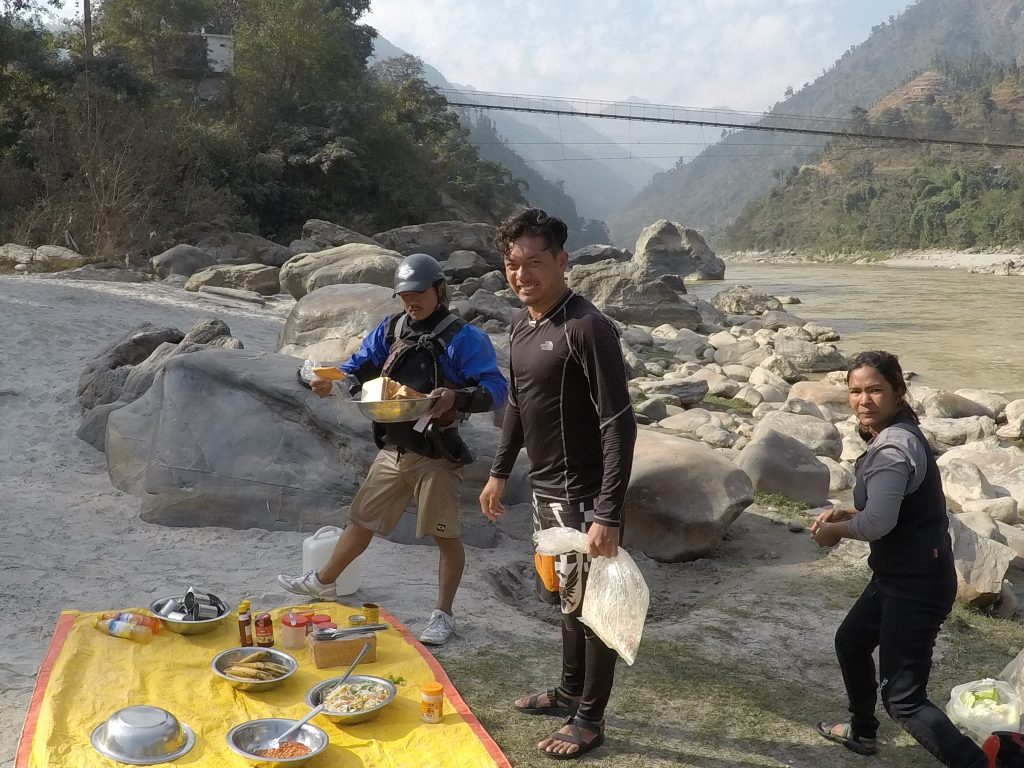
After the rafting was done for the day, we got back on a bus for another few hours to head down to Pokhara. The snowpeaks were beautiful in the fading light.
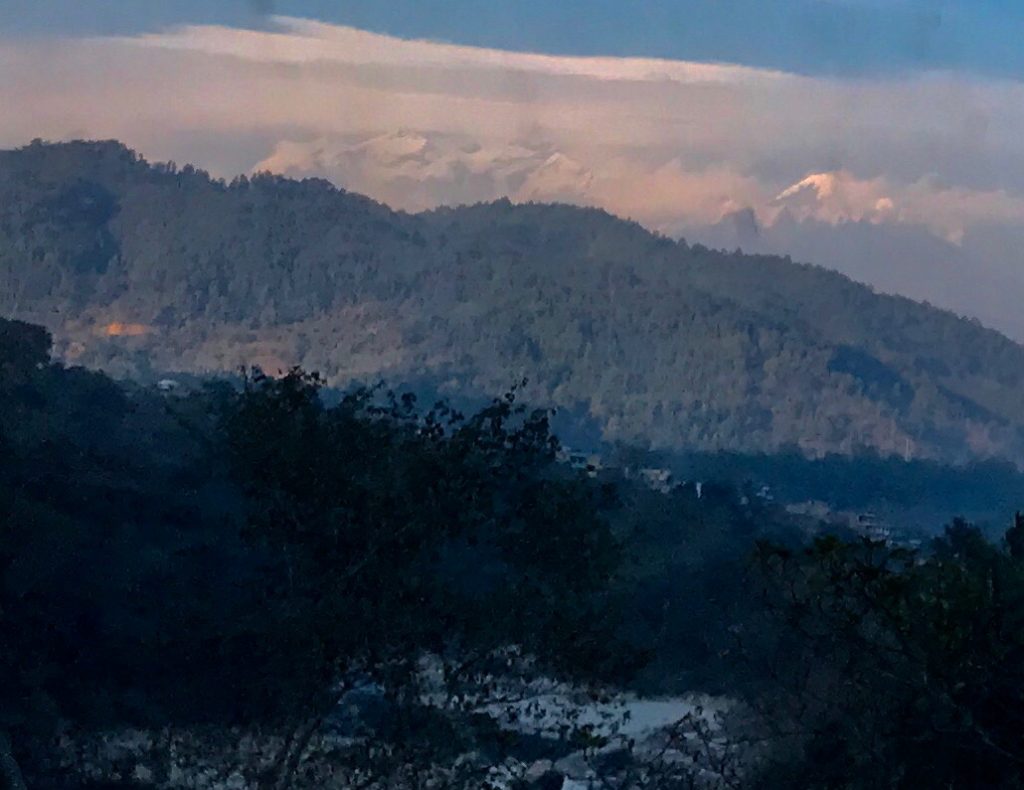
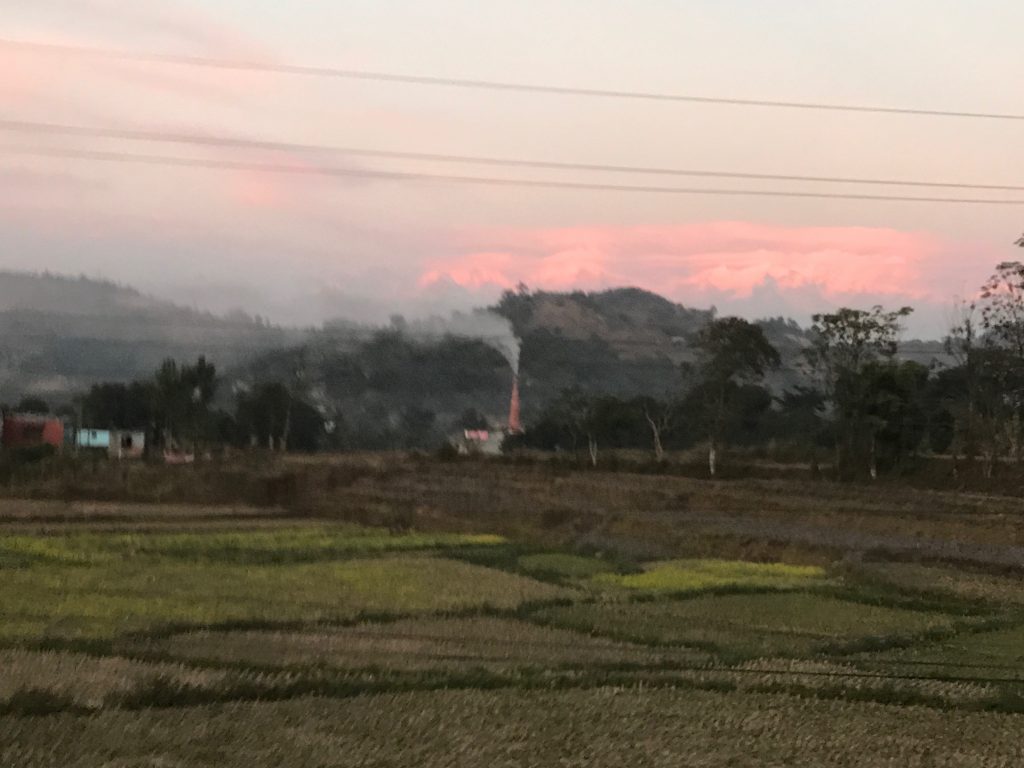
Unfortunately, everyone else also seemed to think Pokhara was a good place to spend New Year’s Eve.
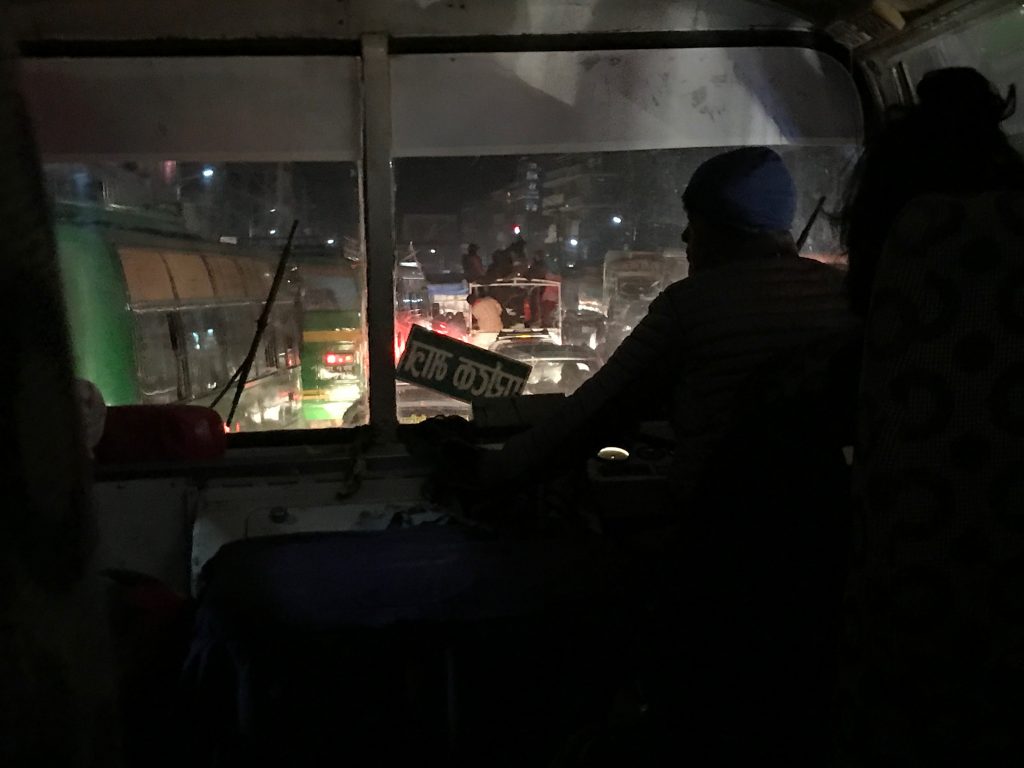
Zoë, Jeremy, and I spent the first days of the new year on retreat at Sadhana yoga center in the hills above Pokhara. The setting was beautiful,
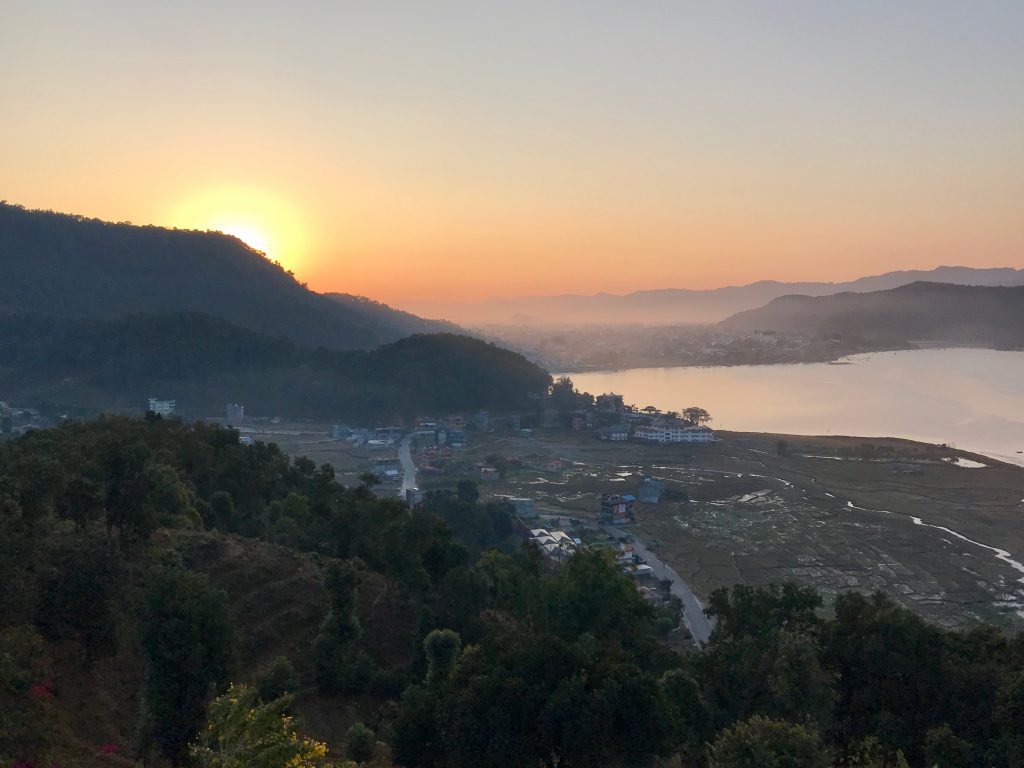
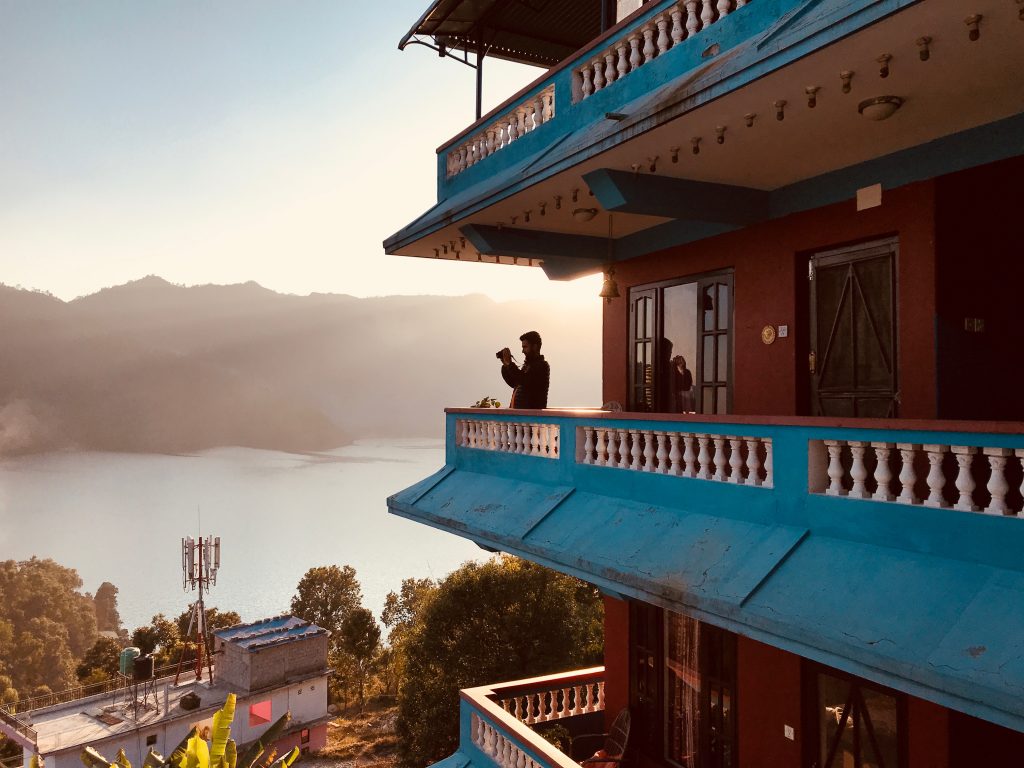
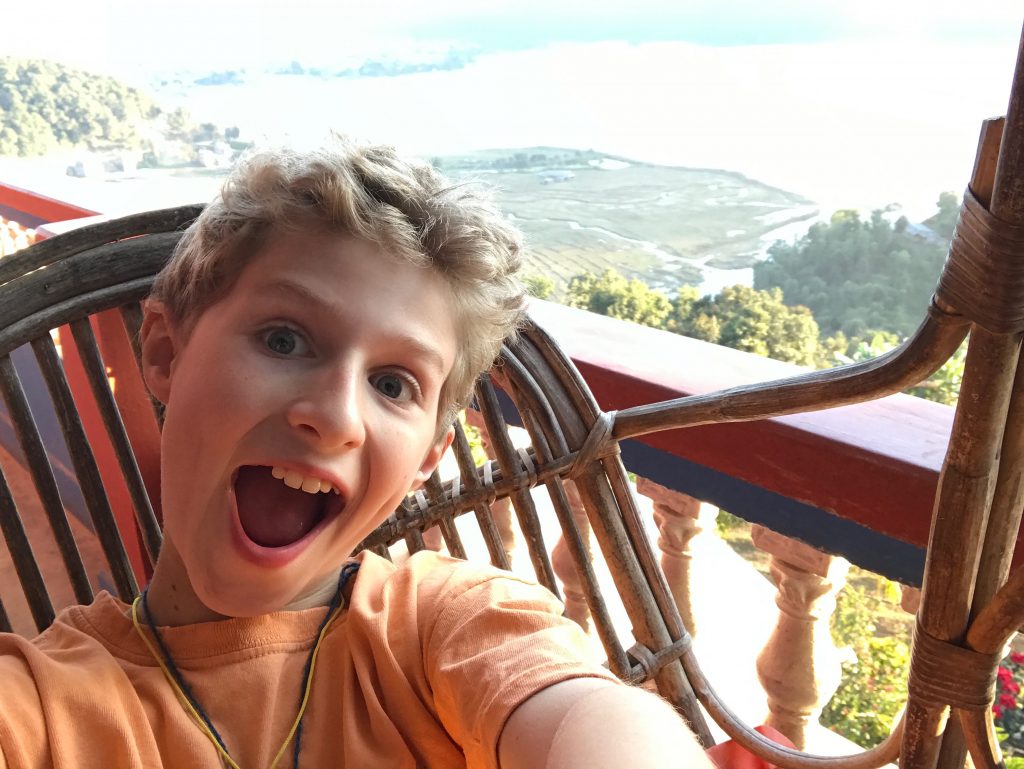
and so were the staff.

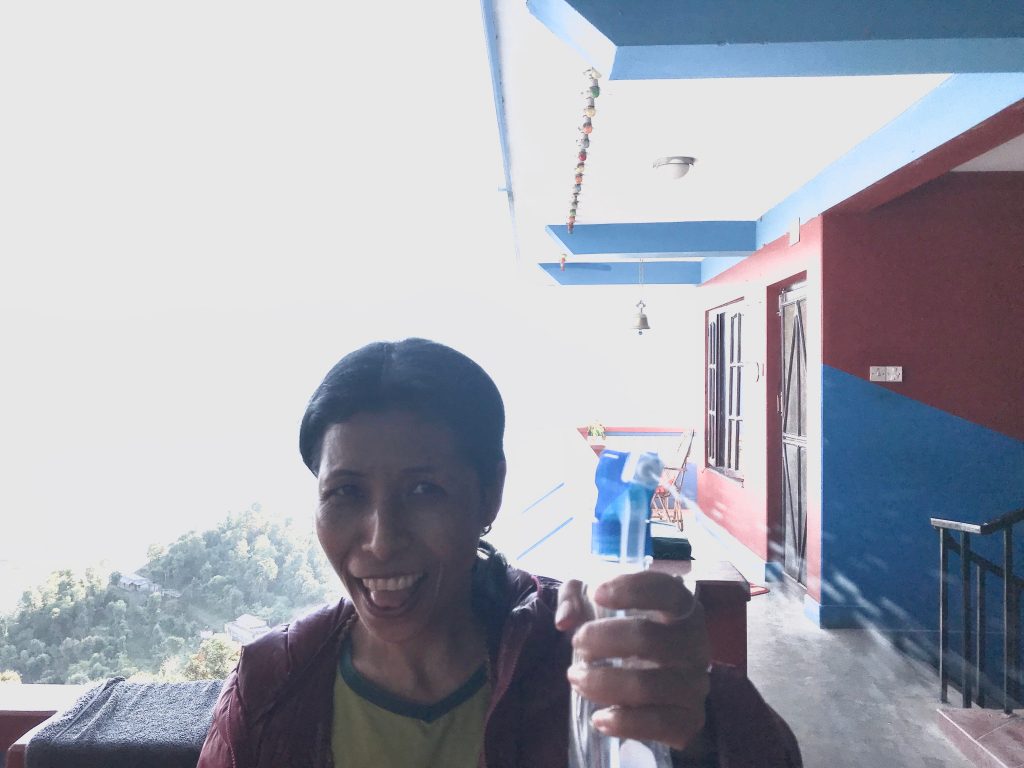
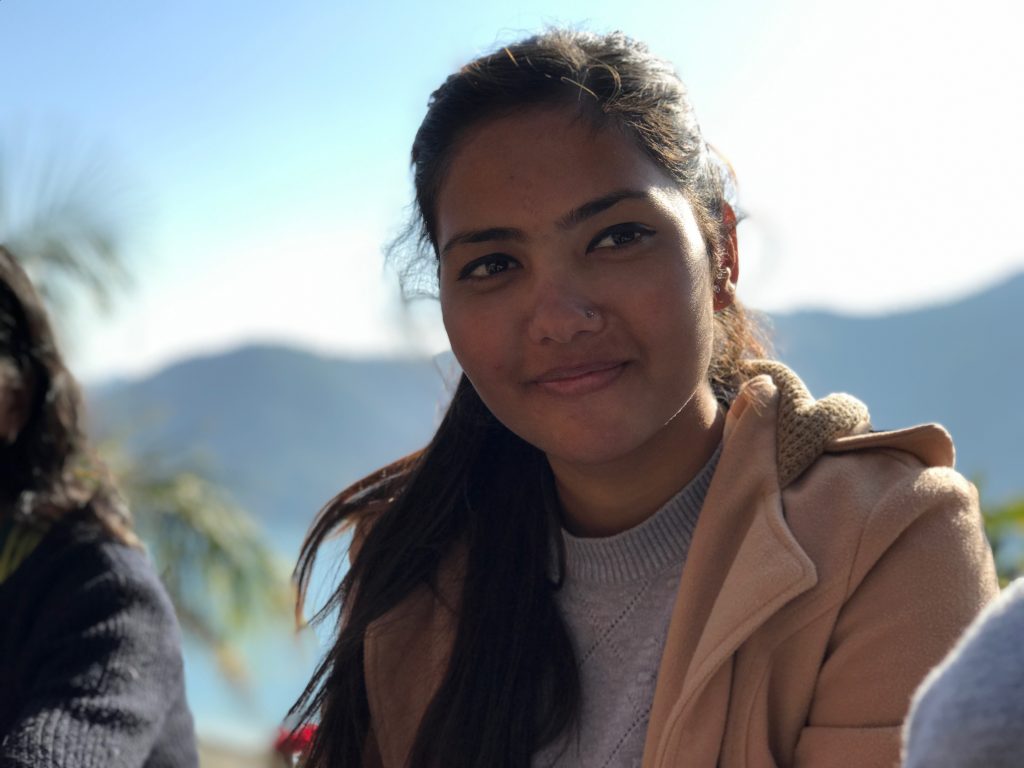
We tried lots of new things, in addition to yoga, like cooking
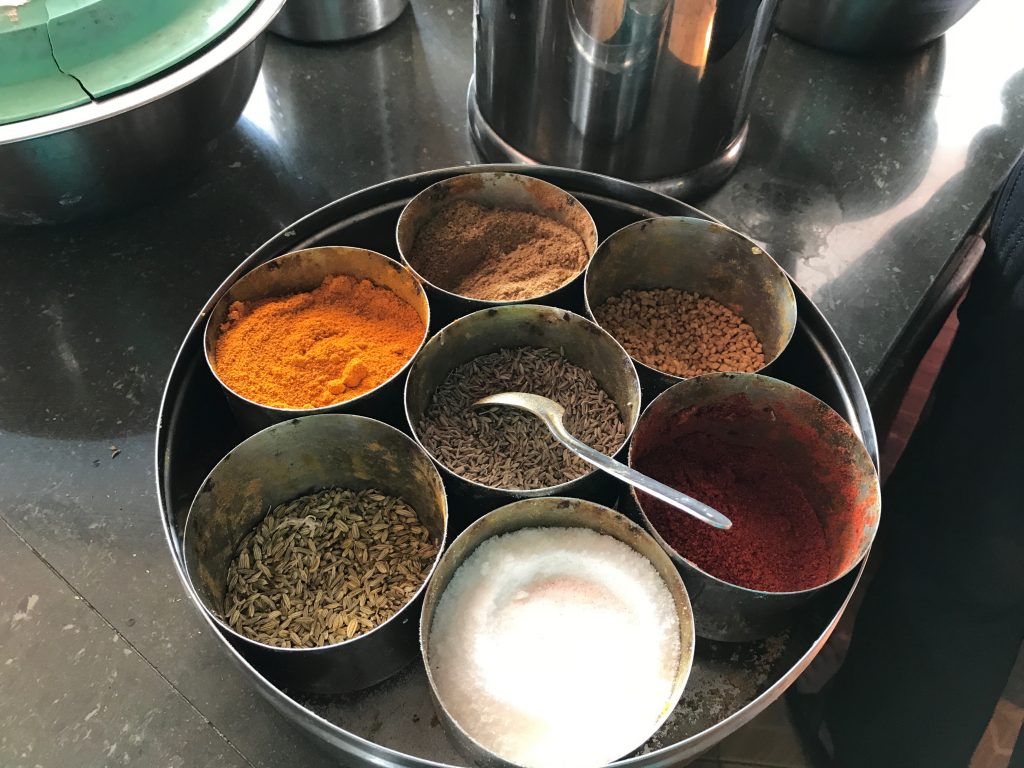
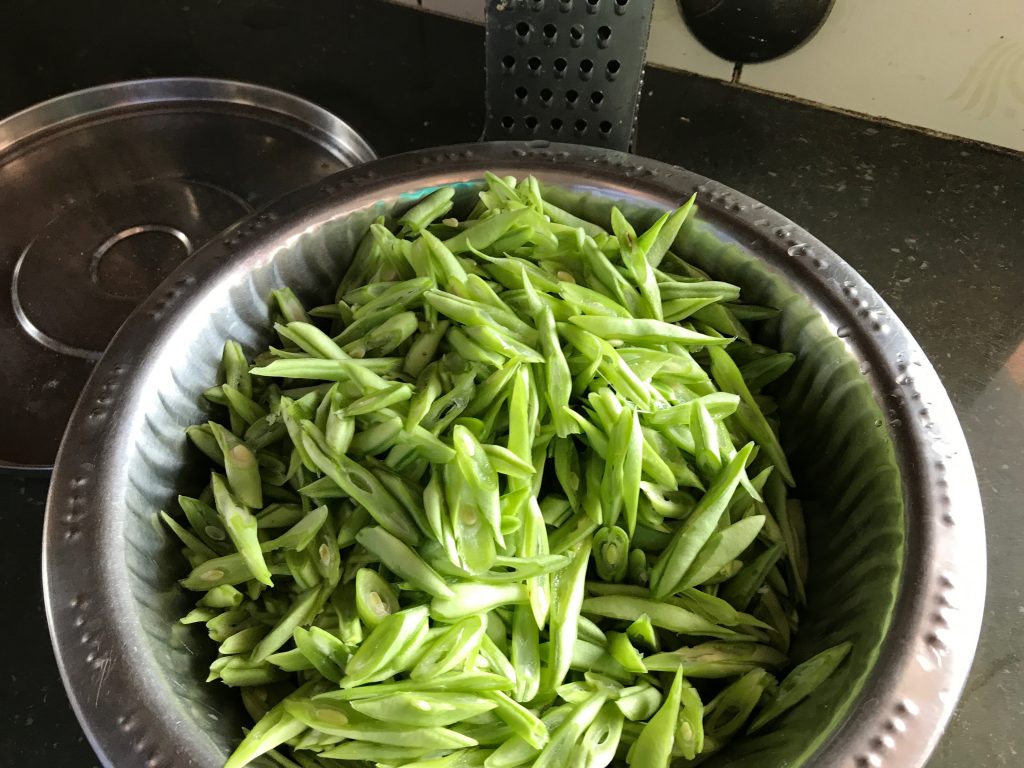

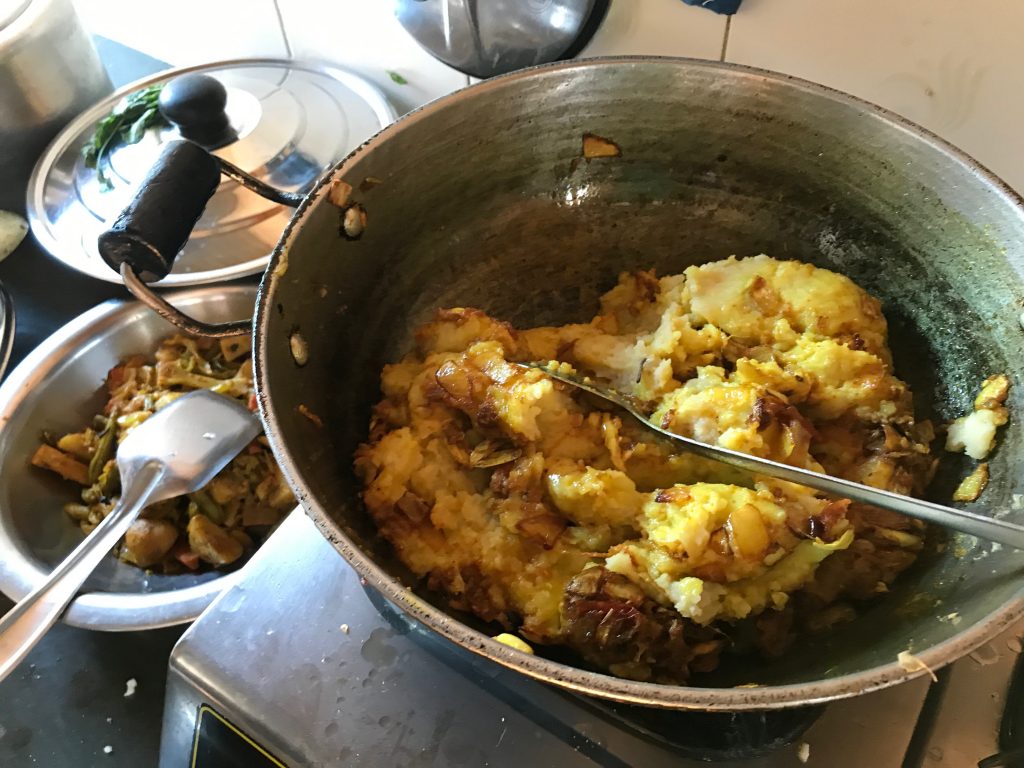
(including momos, though Nepali momos are different from the Bhutanese kind…)
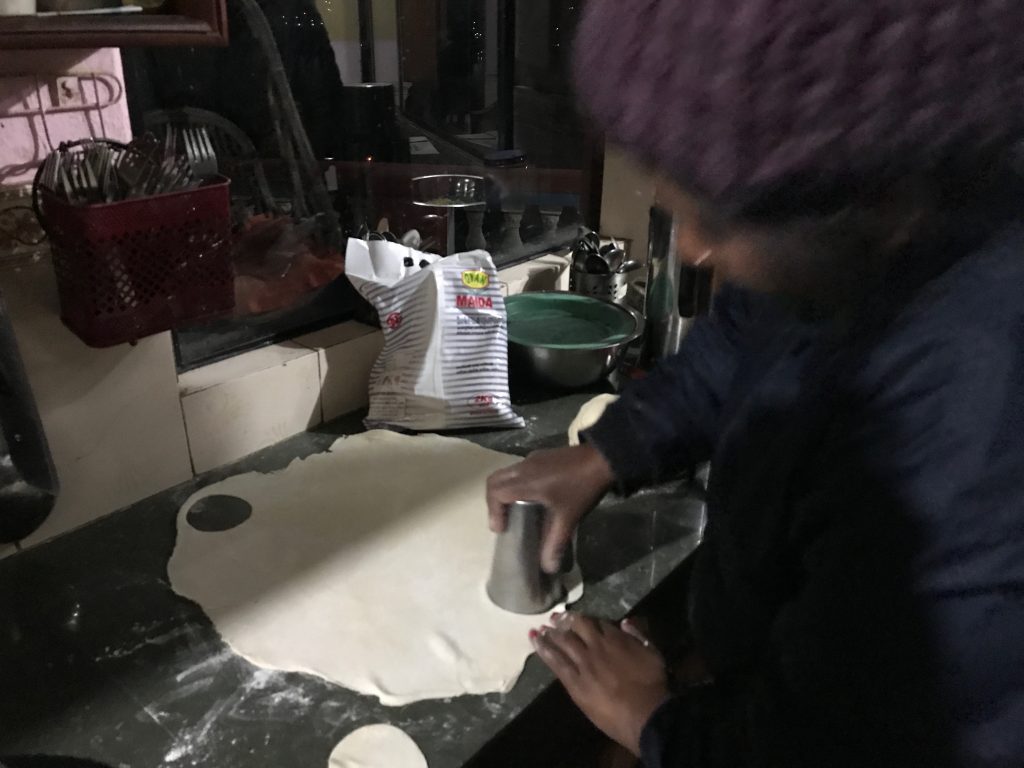
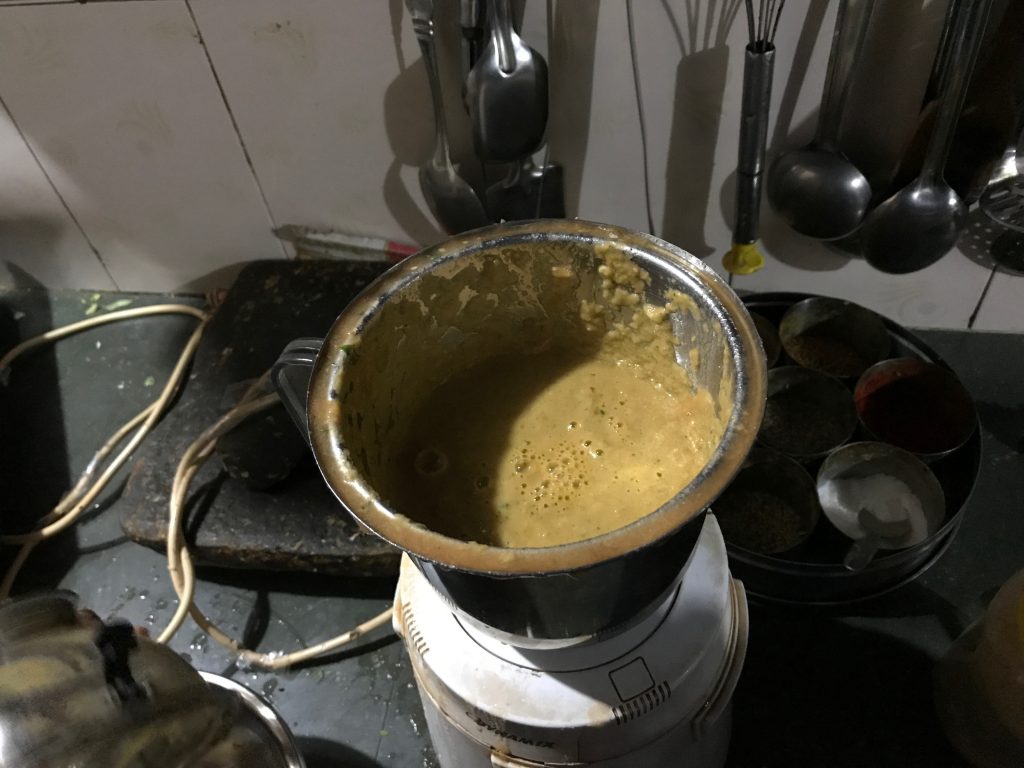

There was candle gazing and chanting and a steam experience constructed out of a metal-lined box hooked up to a pressure cooker. Jeremy considered this somewhere between a torture chamber and a carnival show. I did look a little goofy inside the box. (It’s supposed to be good for your health to steam your body but not your head.)
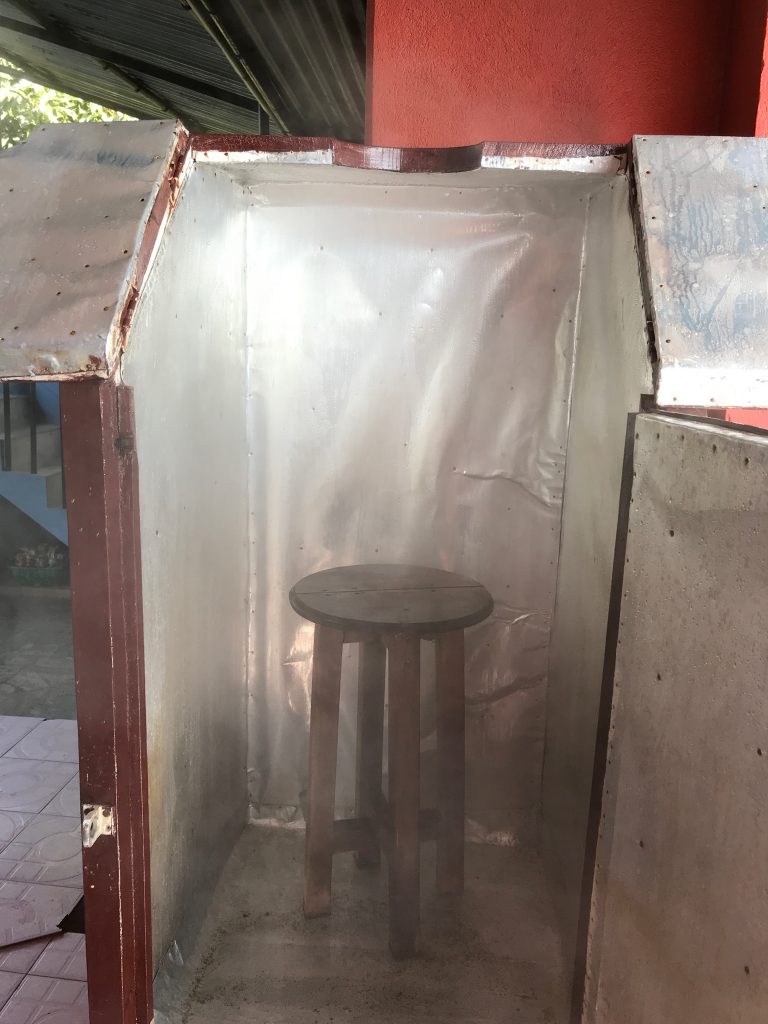
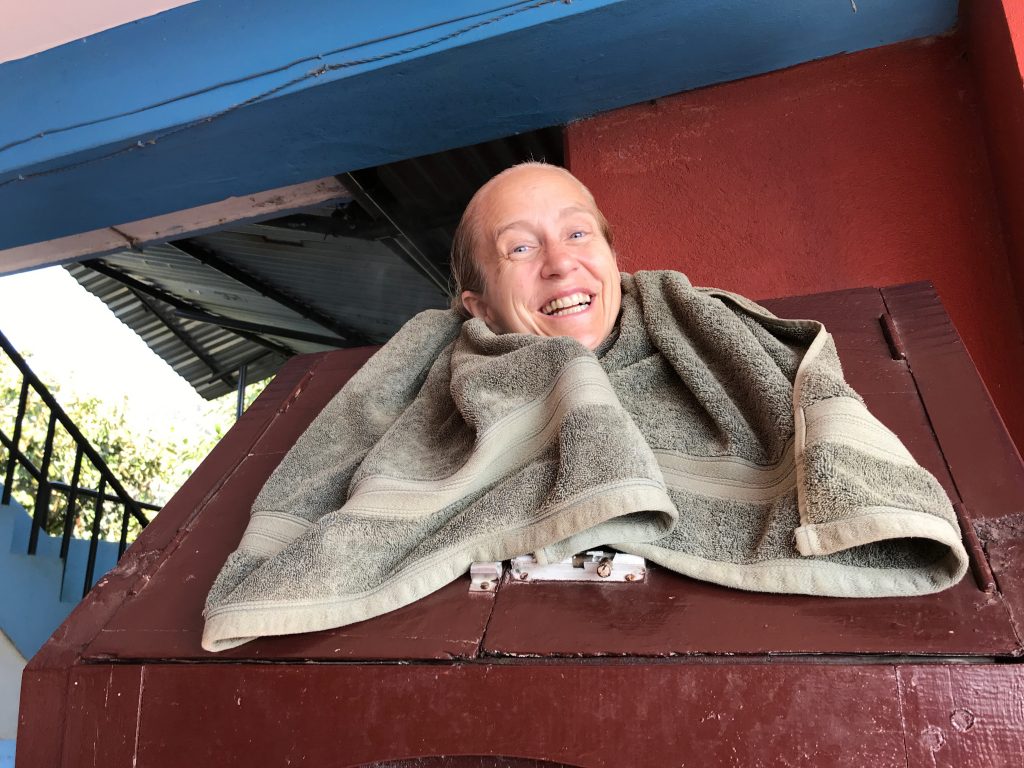
While we were off on retreat, James checked out paragliding–and the rest of us took a page out of his book once we were back in Pokhara.
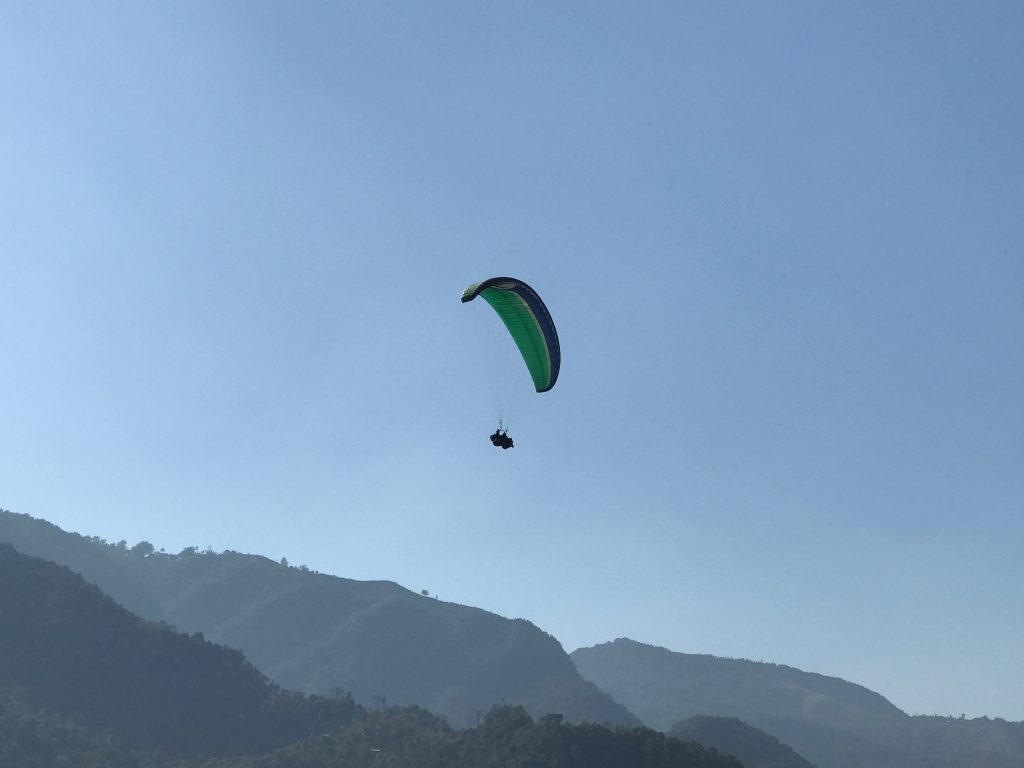
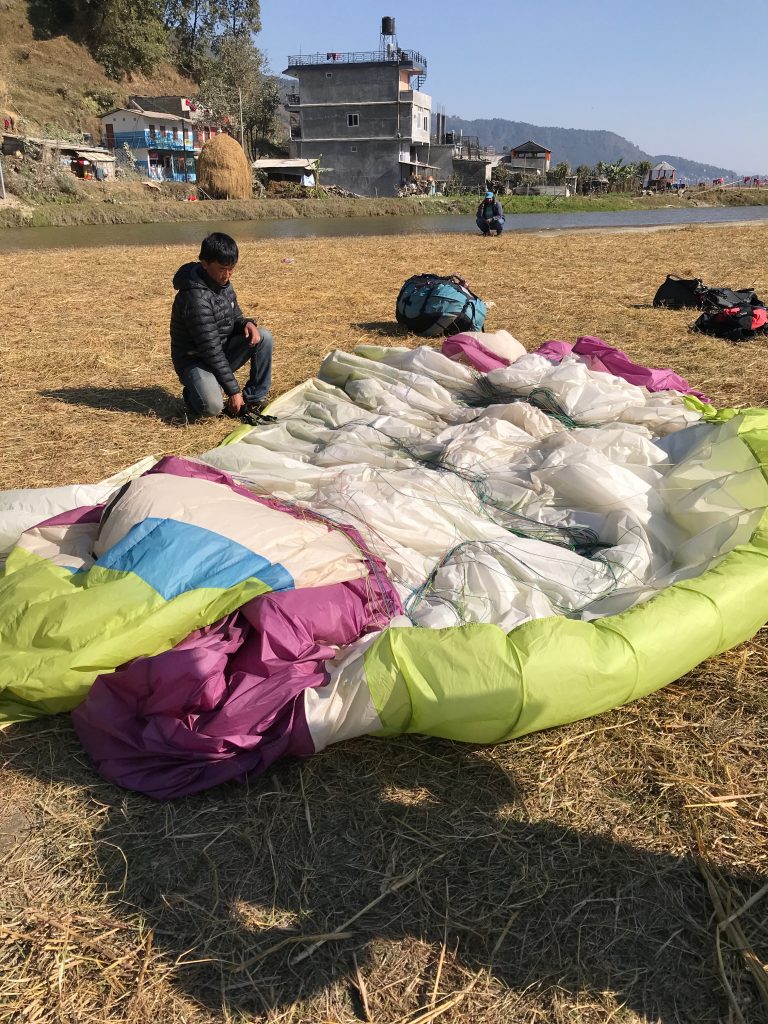
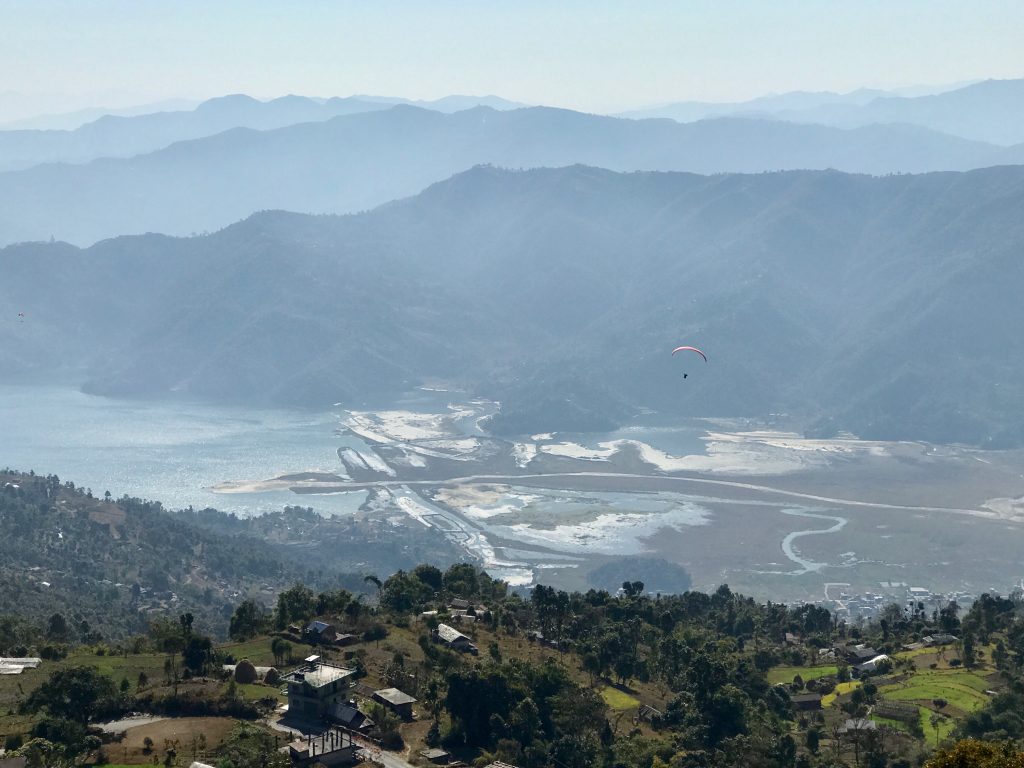
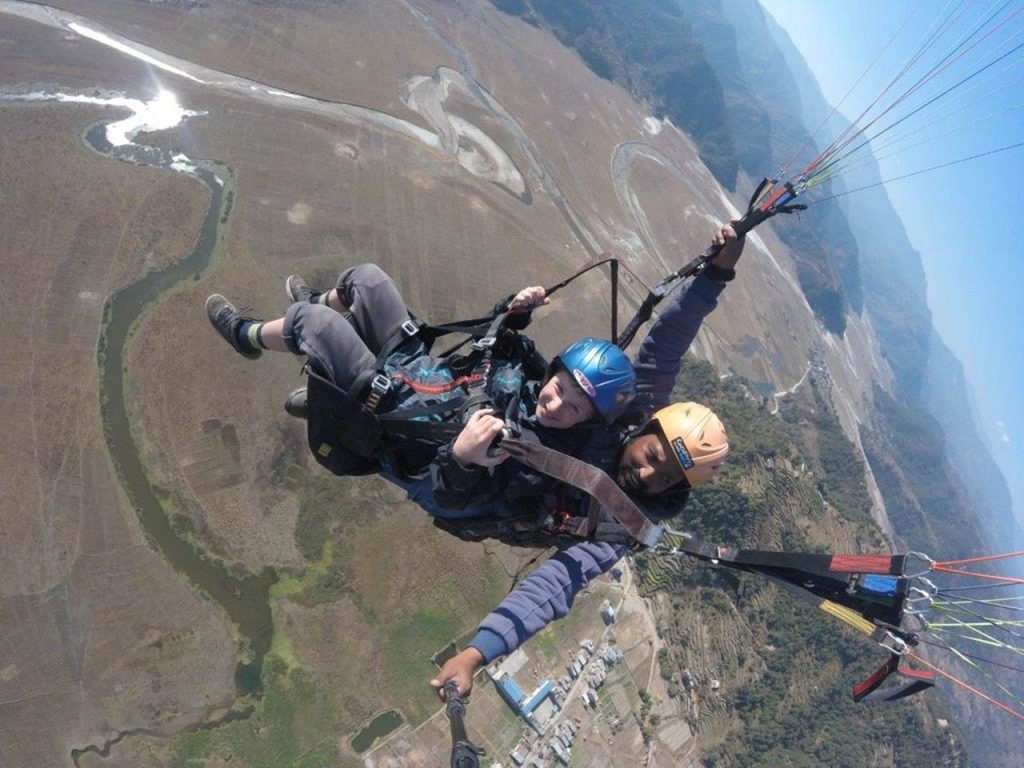
We liked it so much, we did it again the next day. Biru (who took me) and Rakesh (who took James) swapped sails so that Rakesh could do a loop-de-loop with James and Biru could take me high and far. Scudding along over the mountain range and down to the city–and then back across the lake–is an experience I hope to remember for the rest of my life. The second time, we wanted no photos, but here are a few from our maiden flights.
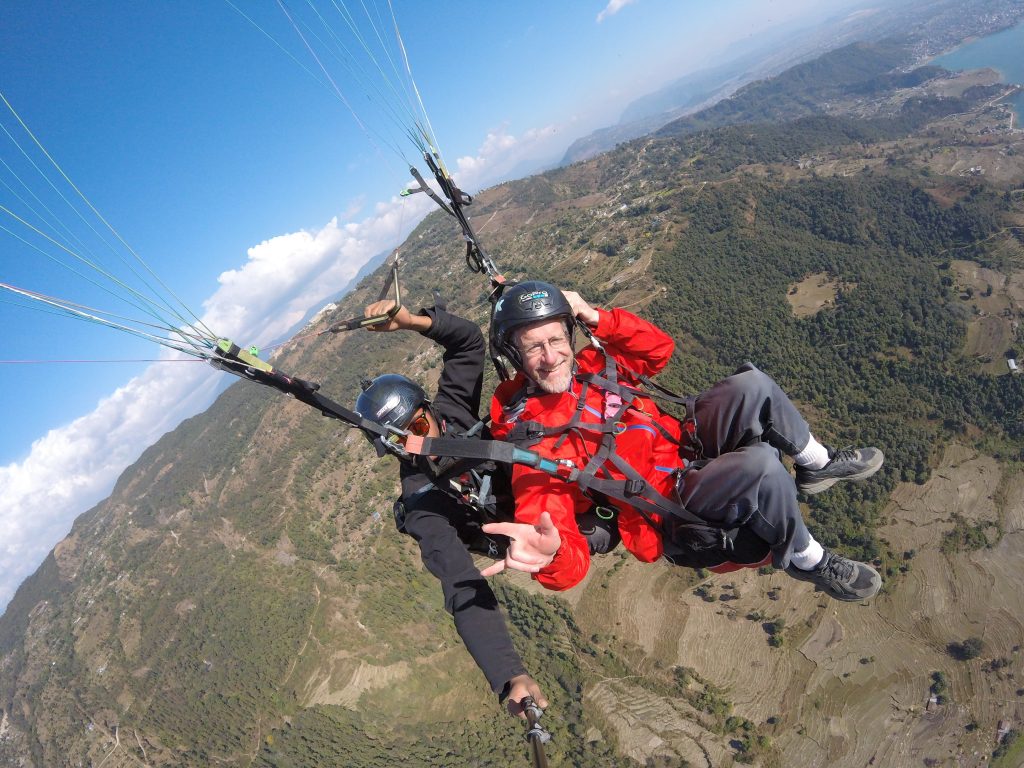
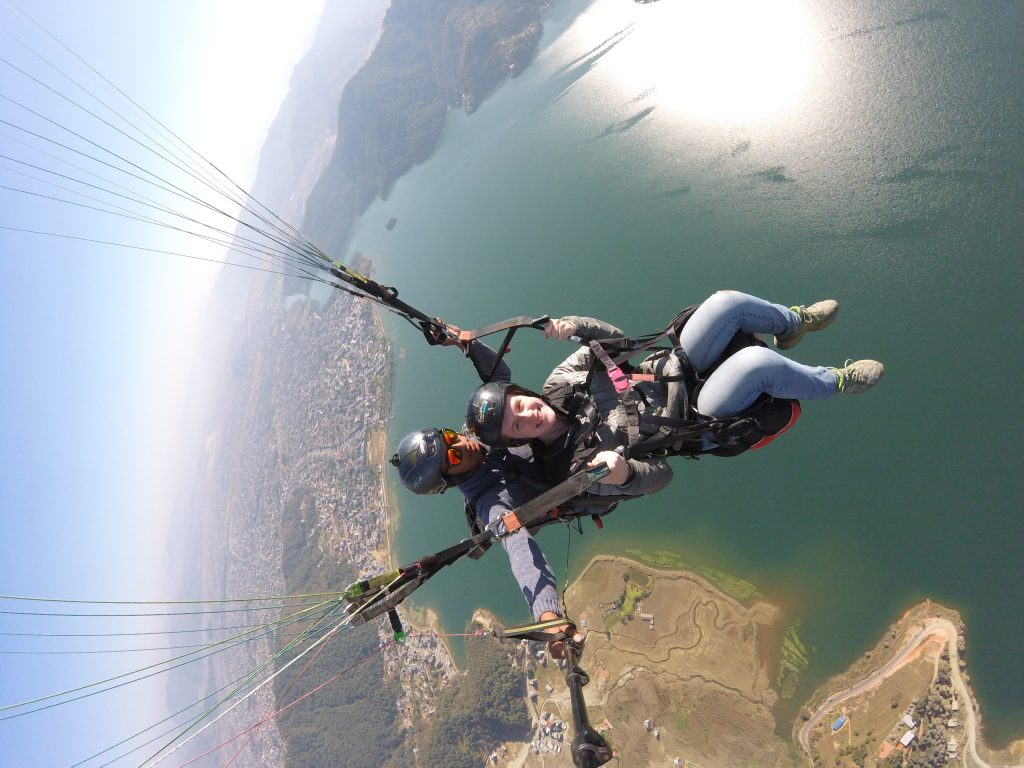
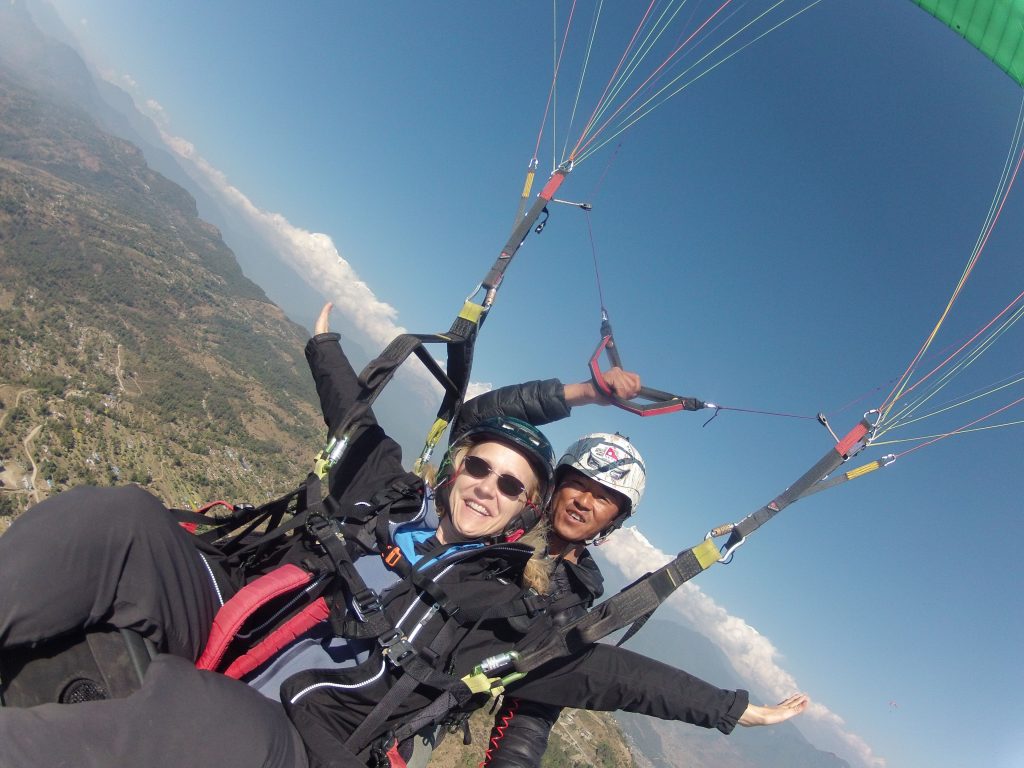
Then we were back to the river, for an overnight camping trip on our way down to Chitwan Wildlife Preserve.
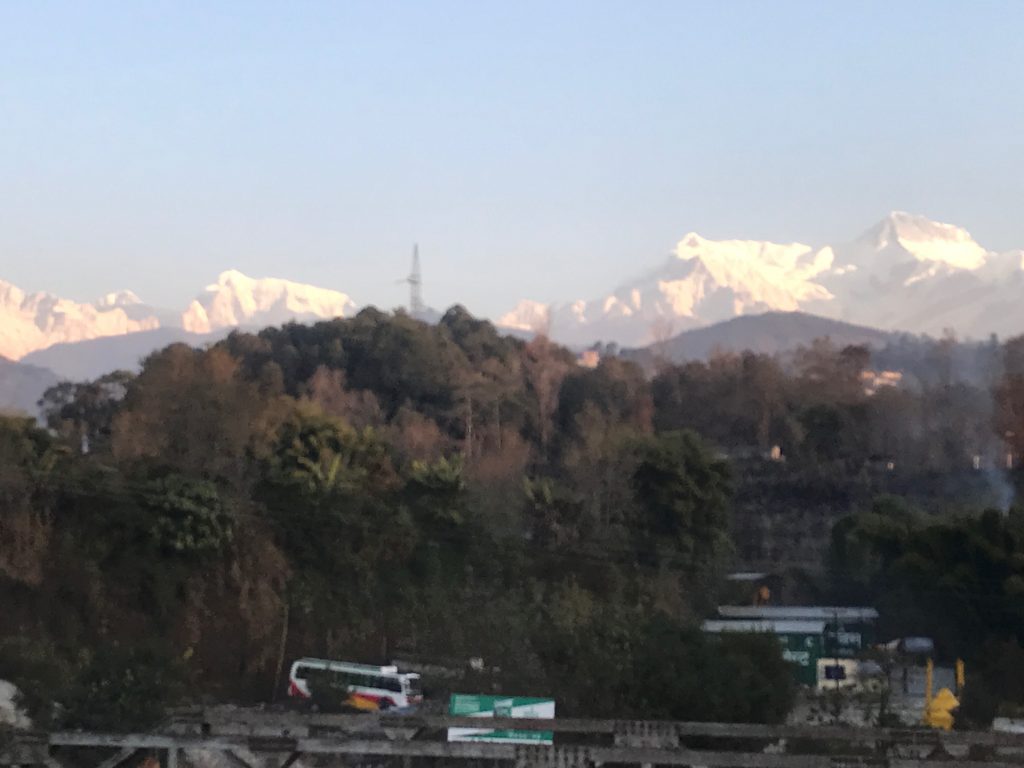
On the far side of the river at our putting-in place, a funeral was in process.
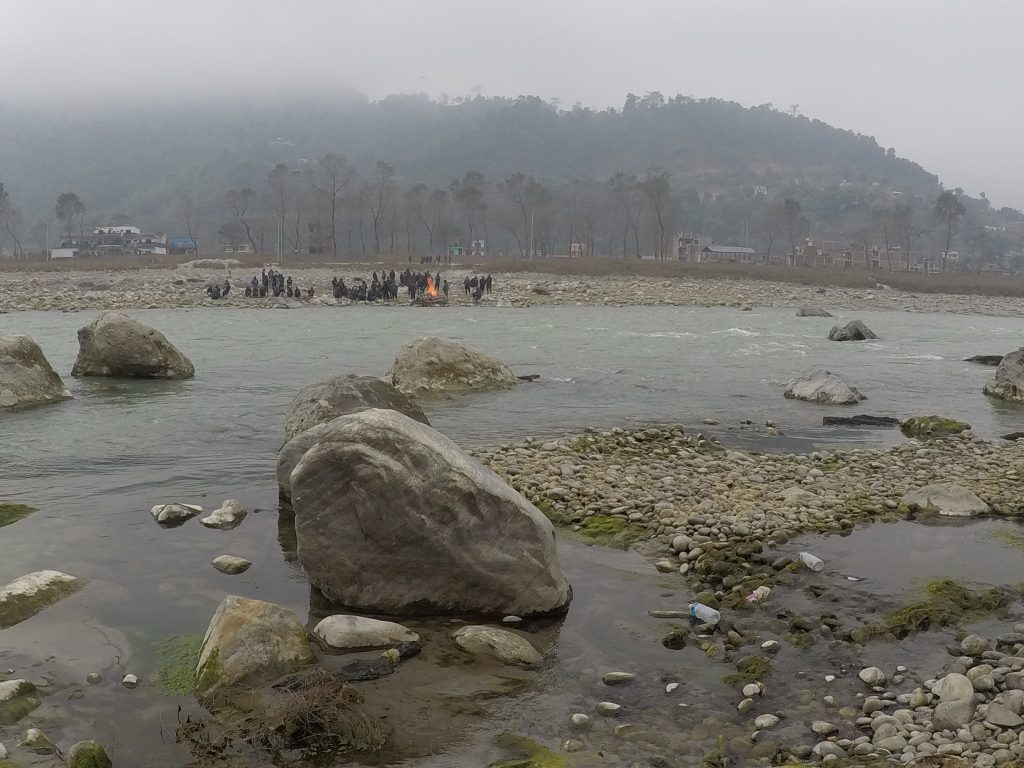
This section was a little less exciting, not least because the raft was weighed down with a lot of gear, and it was being used as a training run for two young women who had no idea how to use a paddle.
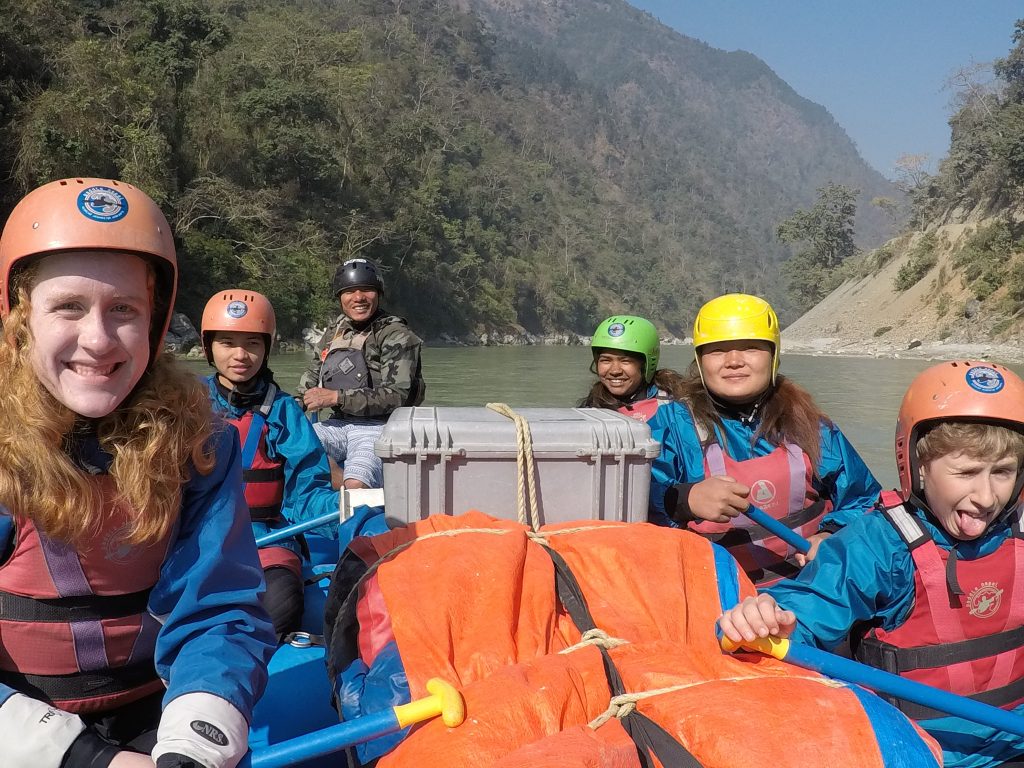
On the other hand, they made some terrific food on the riverside (french fries and roasted marshmallows–yum!) and the scenery was very beautiful.
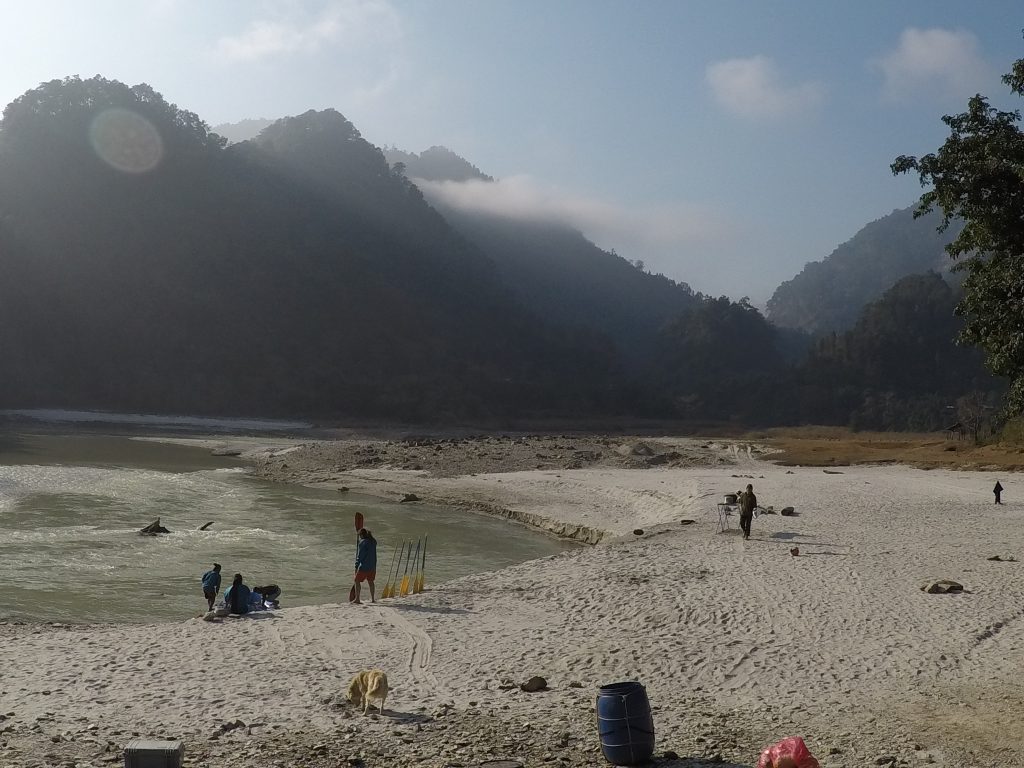
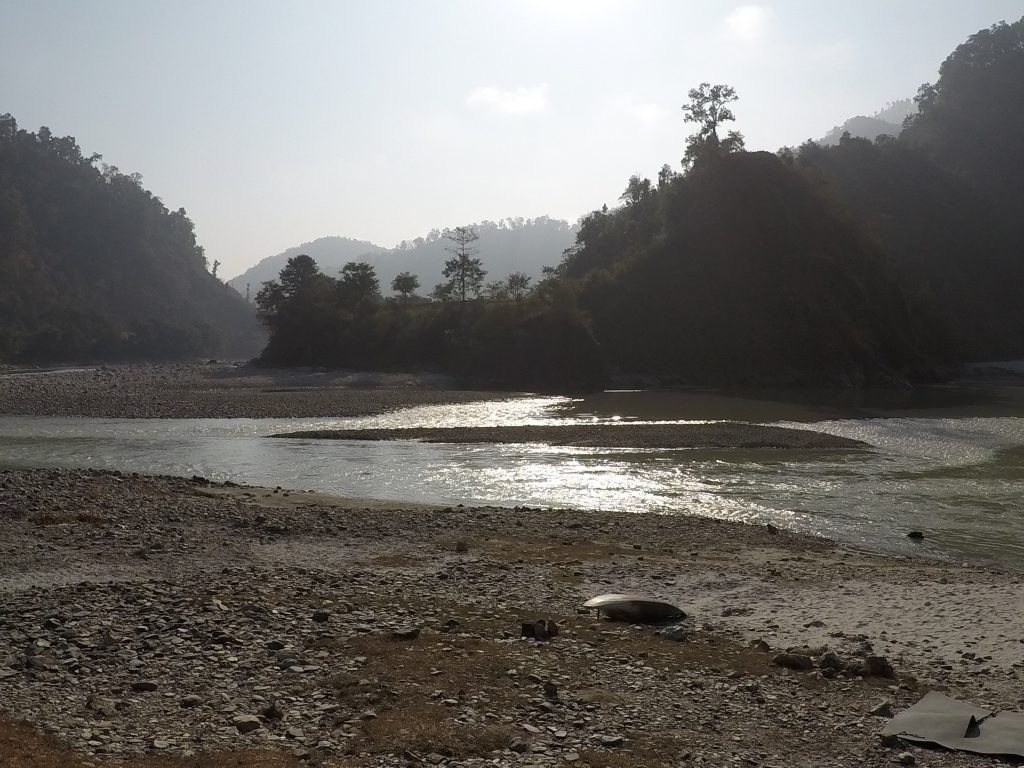
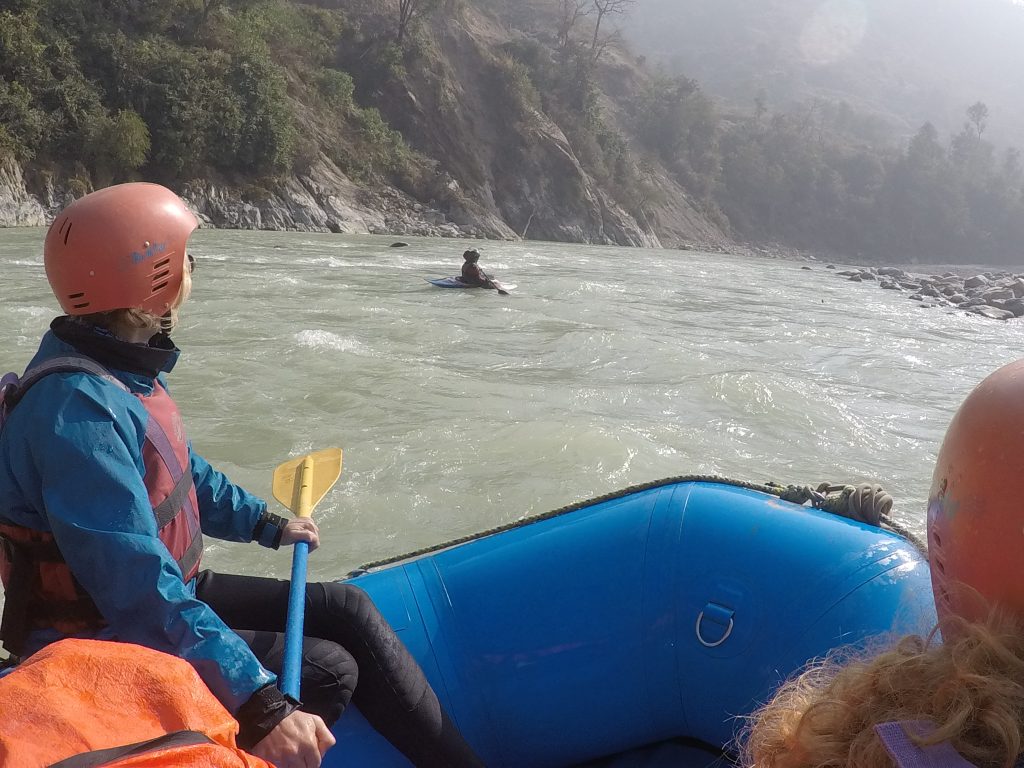
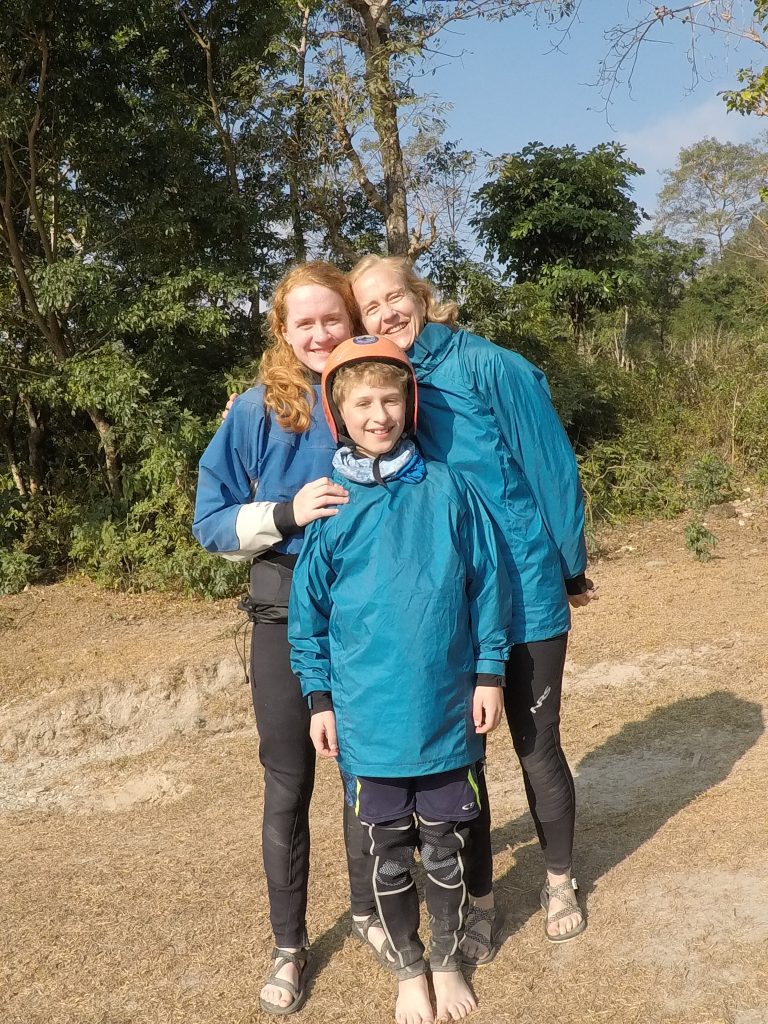
But it was bitter cold. The chief guide set up a lean-to sort of tent facing into the wind because he didn’t believe the wind would continue through the night–when it did, he and his partner shifted the tent (but I think they were still pretty chilly).
At Sapana Guest Lodge (h/t previous Fulbrighter Shelly Daly), we struggled for a bit to find a room that didn’t have mold problems after a flood in the fall, but the staff were terrifically patient with us.
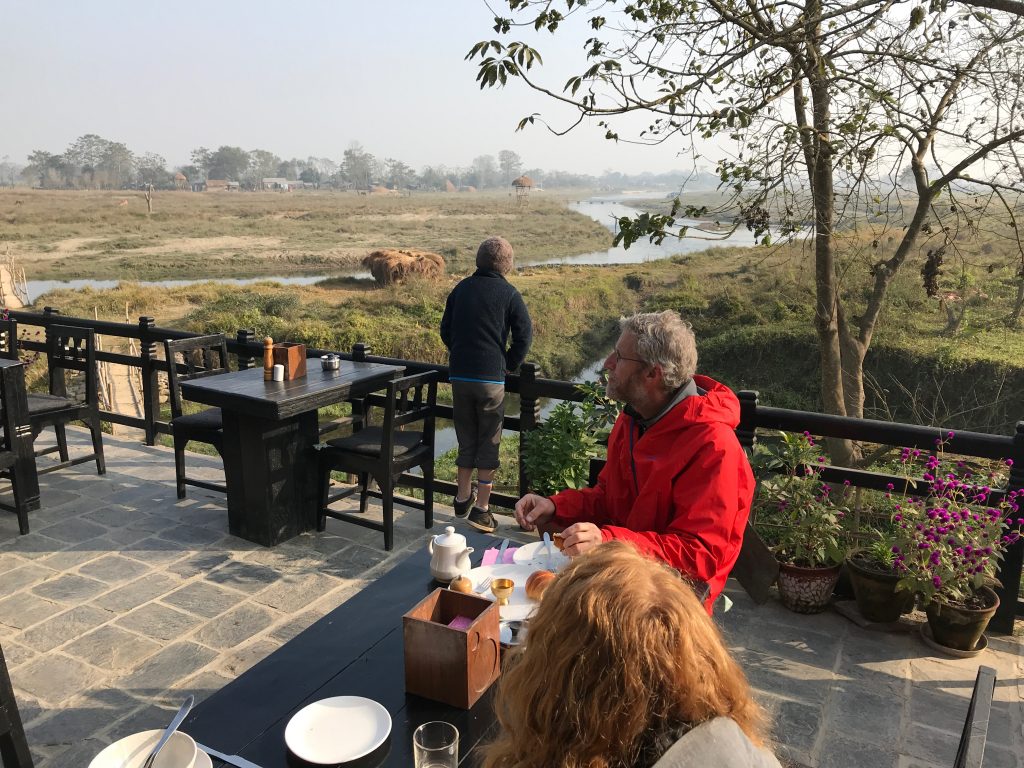
January was still kind of chilly–too cold for helping bathe elephants, for instance–but there was plenty to see and do. Jeremy liked feeding the baby elephant, in particular.
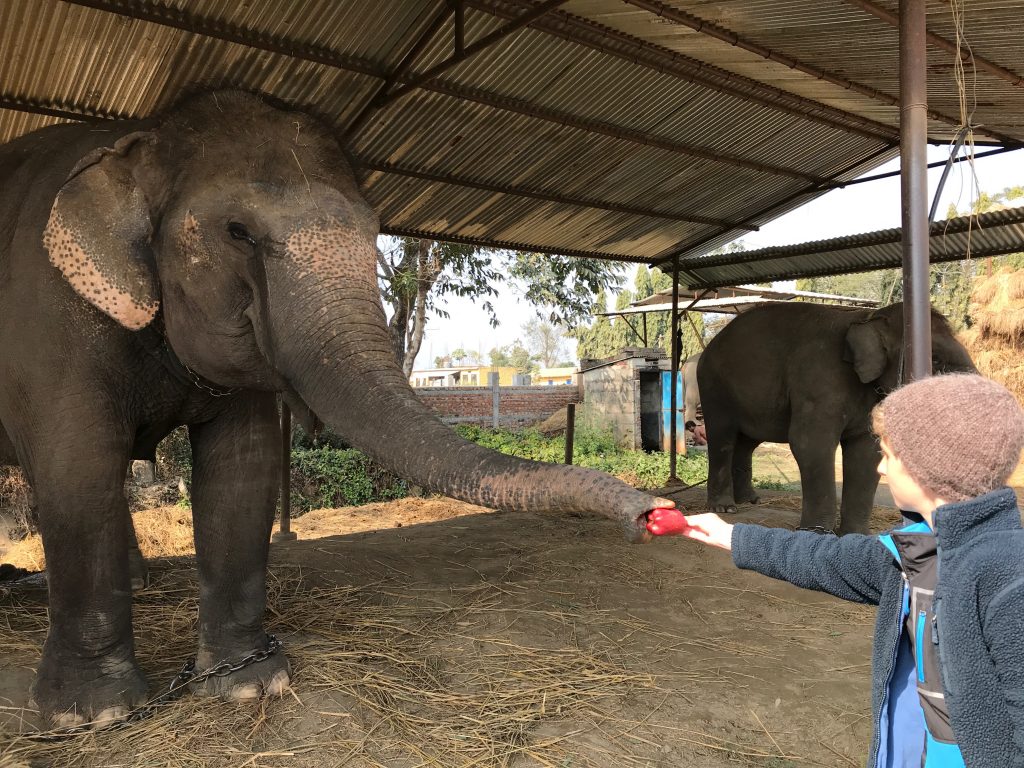
With our new-met friends Simon and Vanessa, we watched and listened to an Asian hornbill (it came to a tree right above our balcony as I was reading.
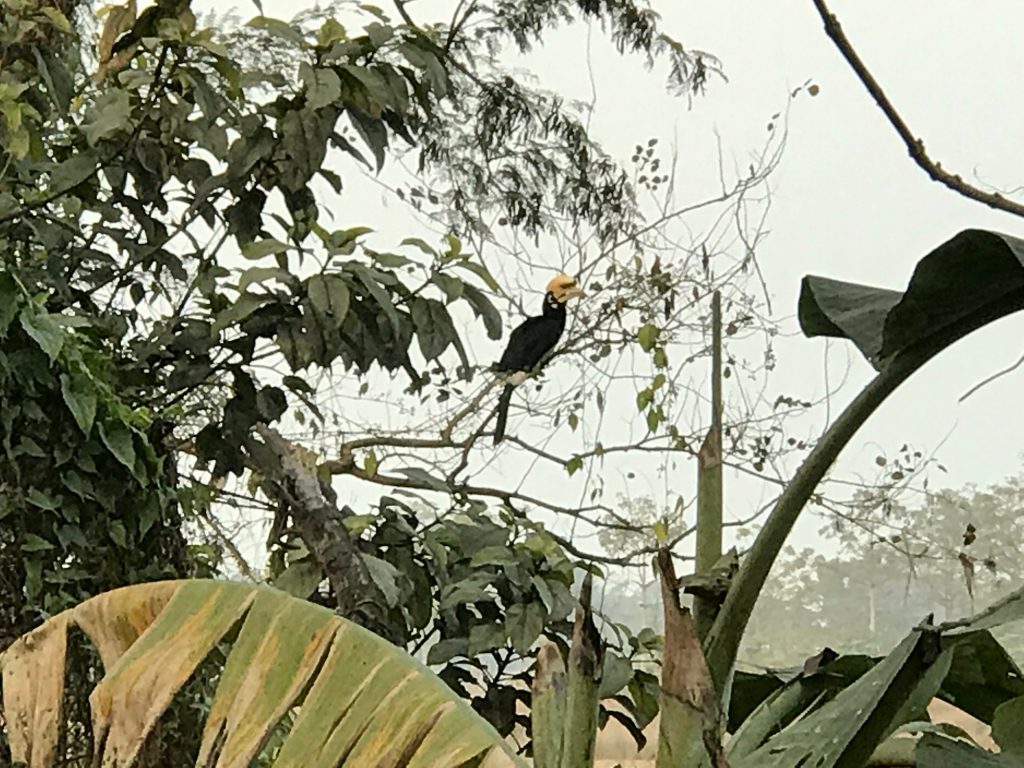
We spent a day in the park proper, first taking a raft across the river
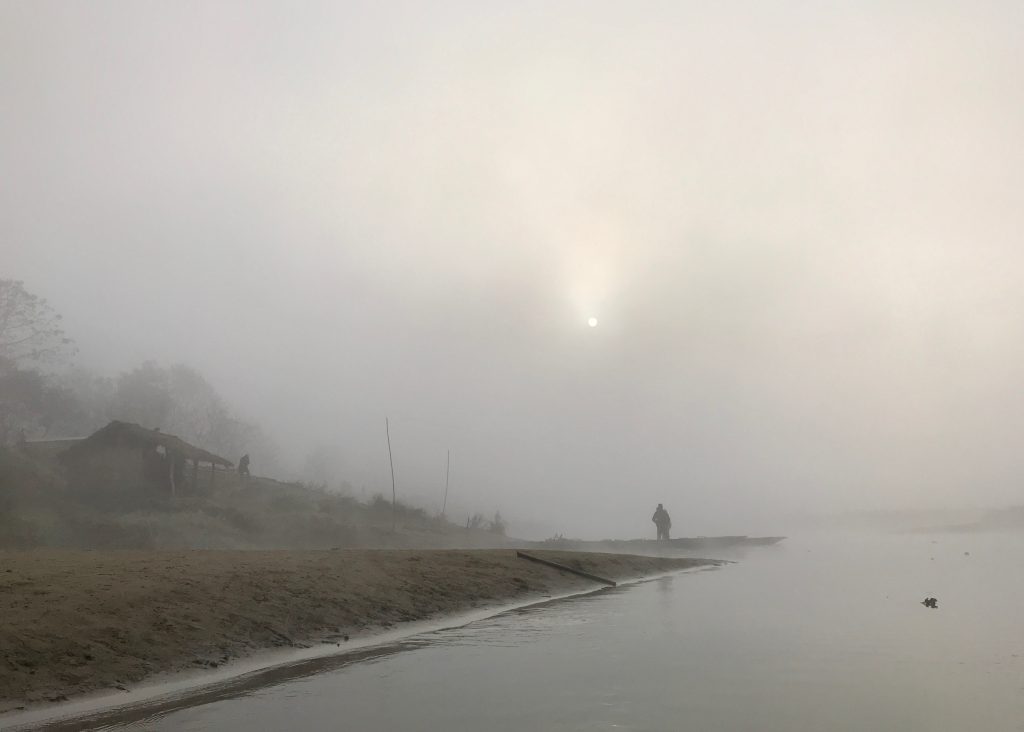
and then spending a day on a jeep in search of the elusive tiger
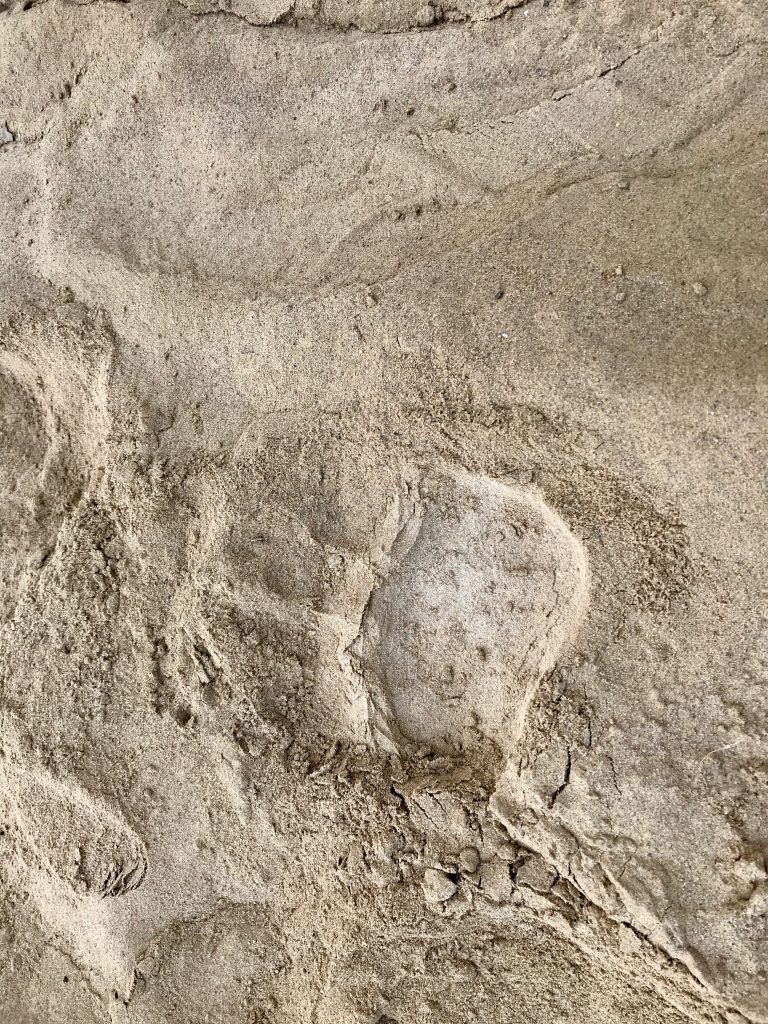
and the less elusive rhinoceros.
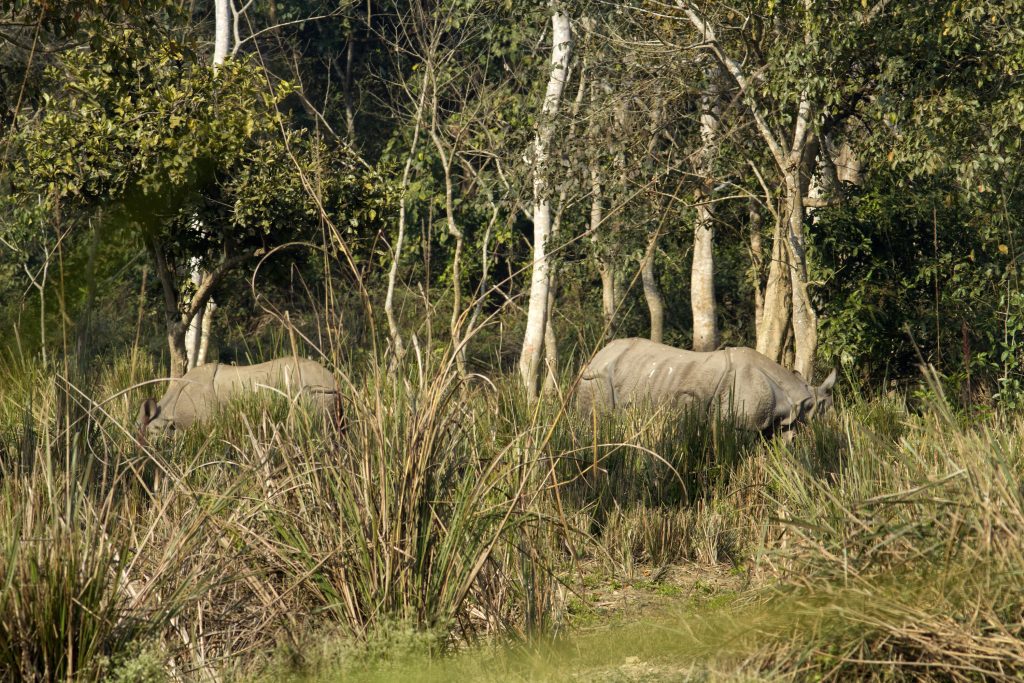
The two above were actually seen by Simon and Vanessa and not, I think, by us, but we watched the twitching ear of the one below for a good ten minutes.
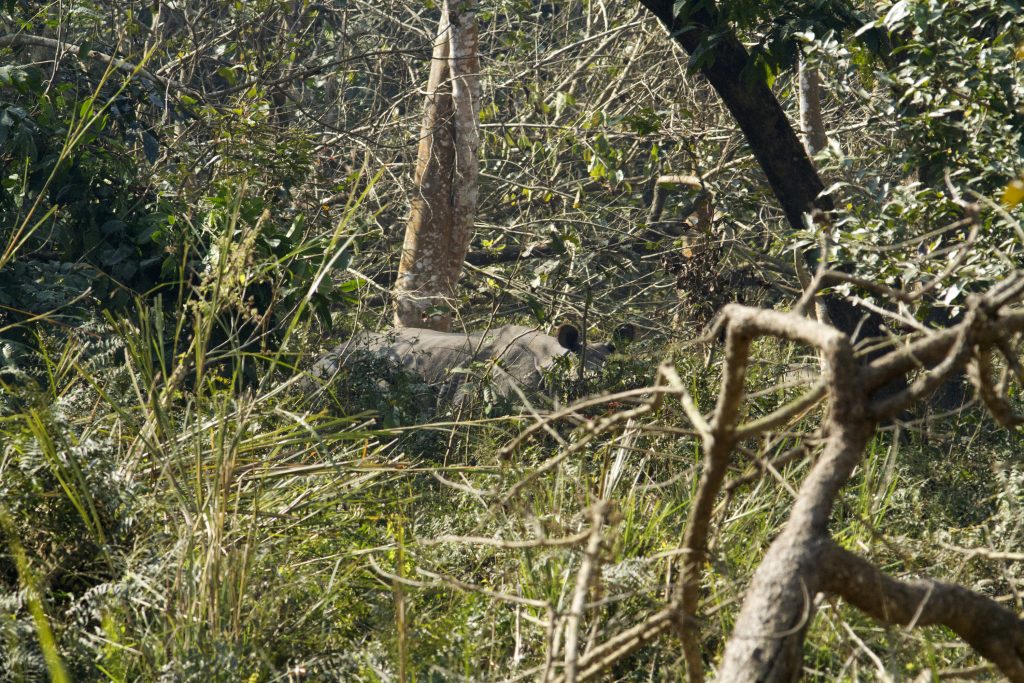
We enjoyed the lunch eaten off of stapled leaves
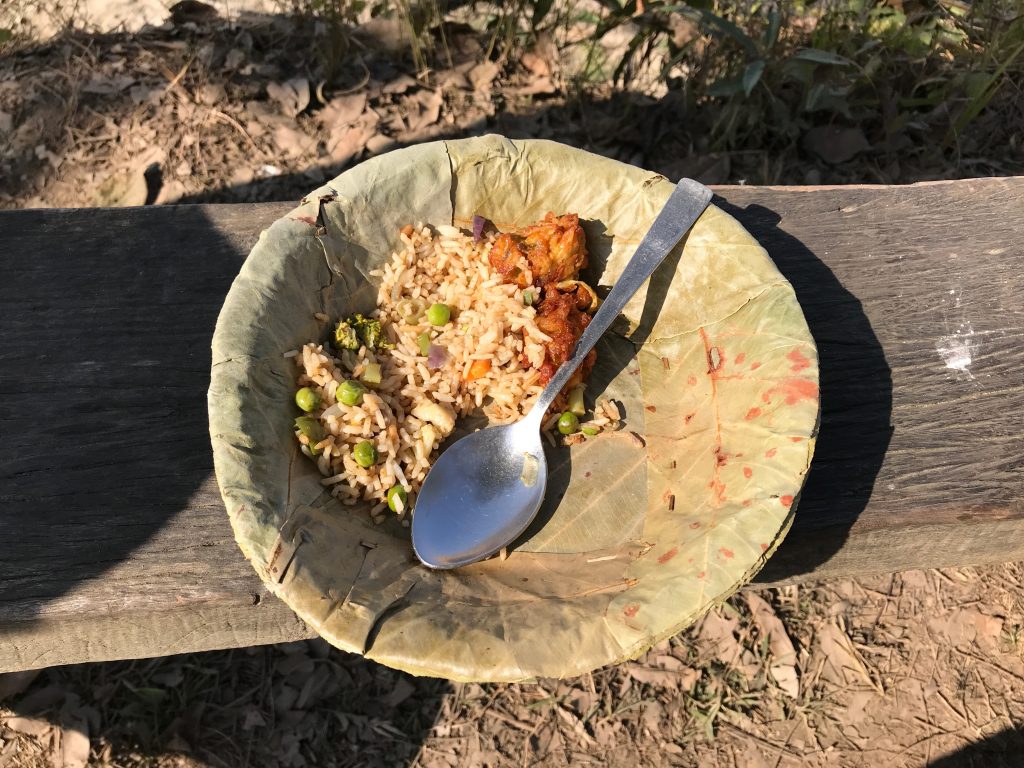
and the sunset was gorgeous.
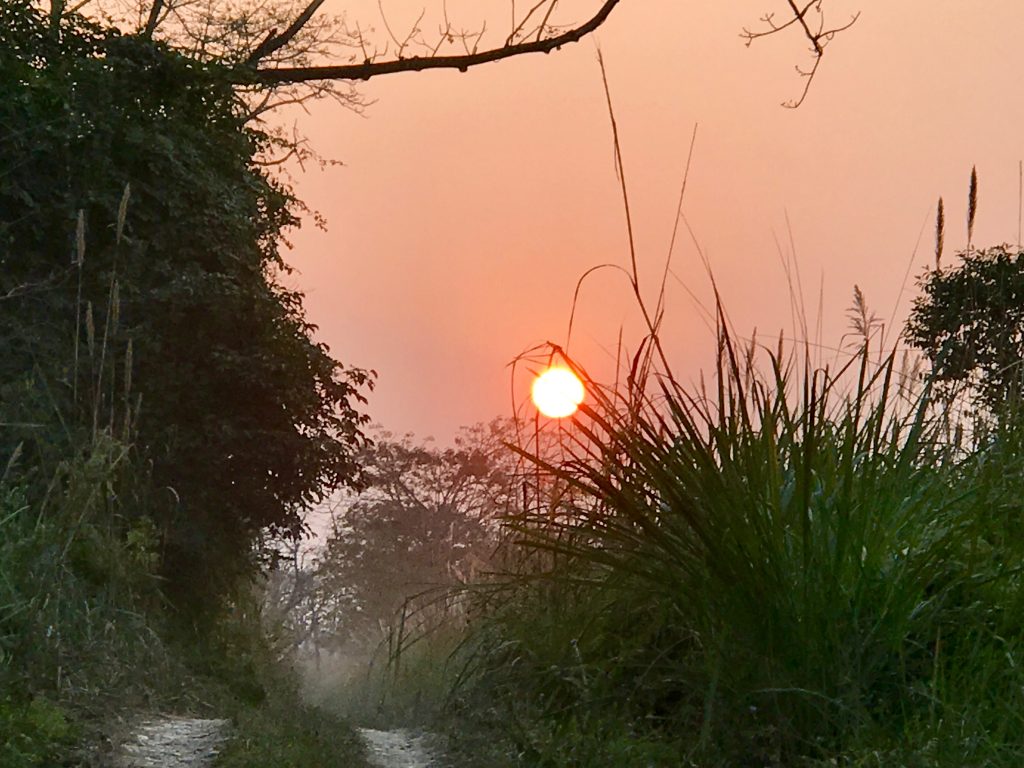
But the most remarkable thing about the park were the birds! All photo credits below to Simon:
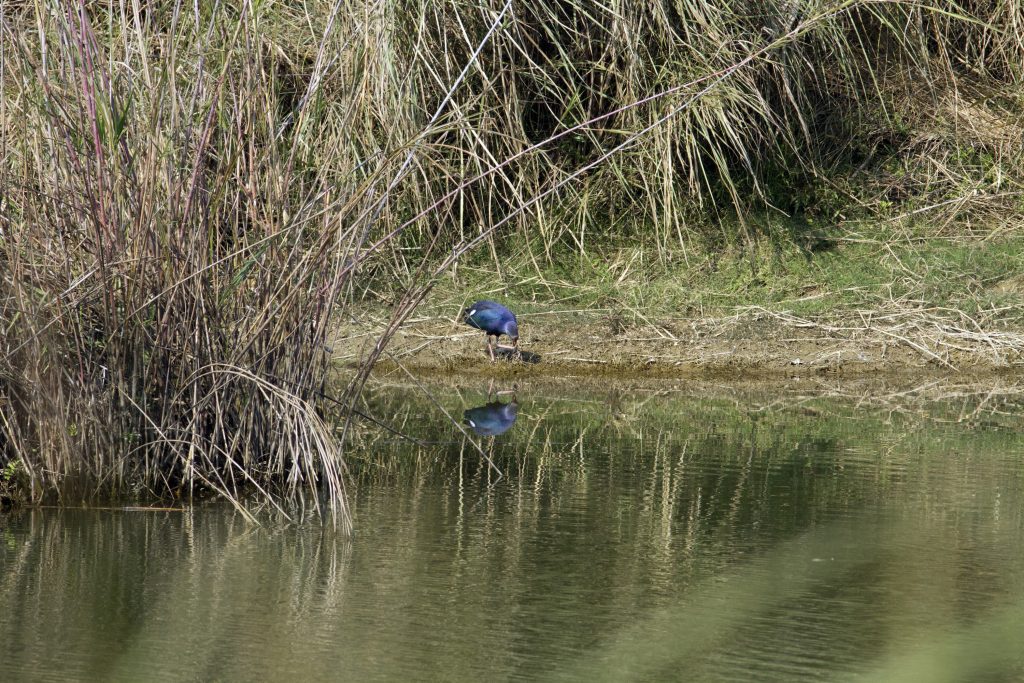
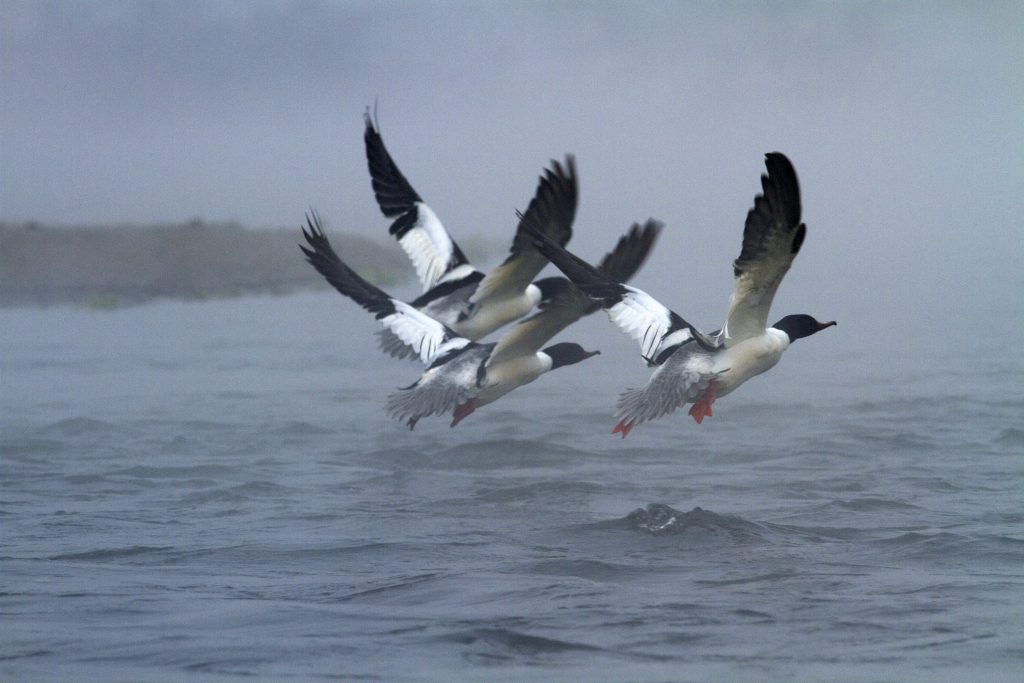
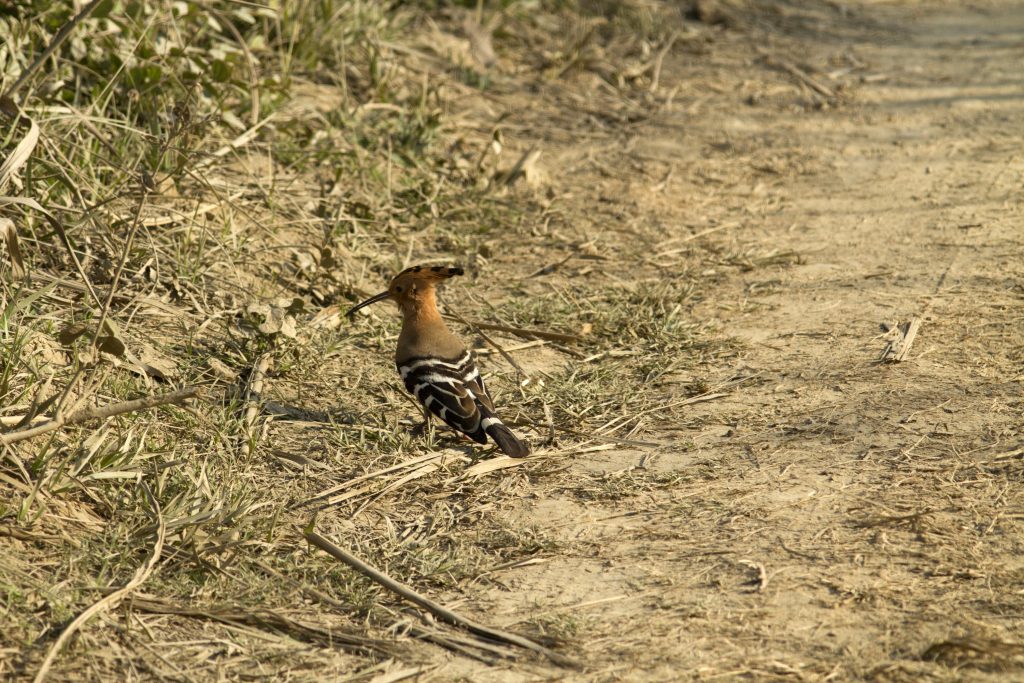
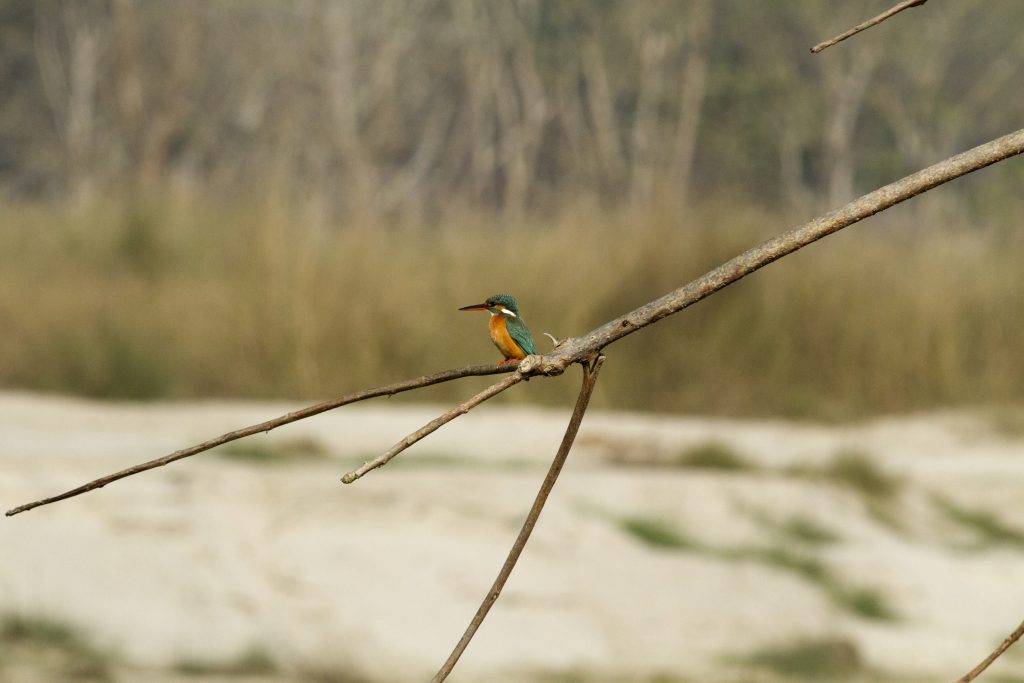
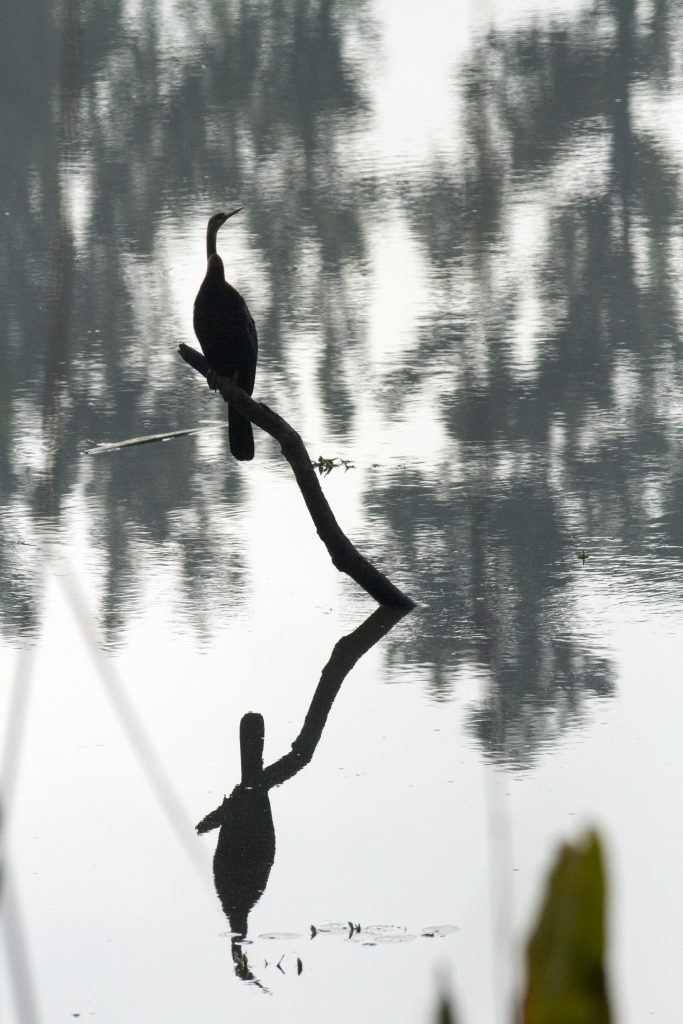
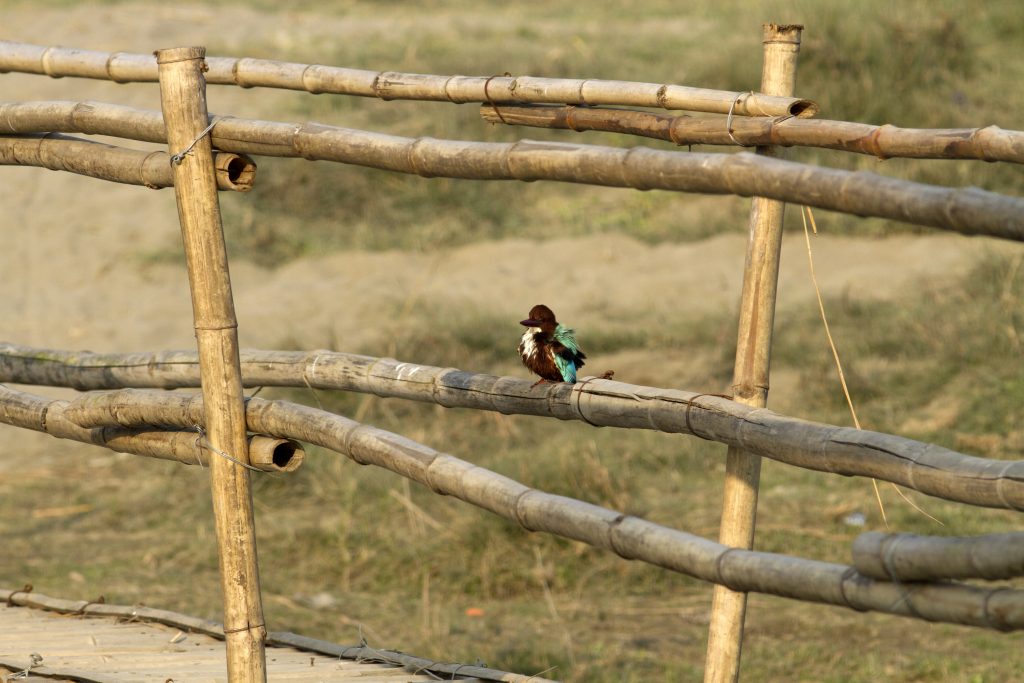
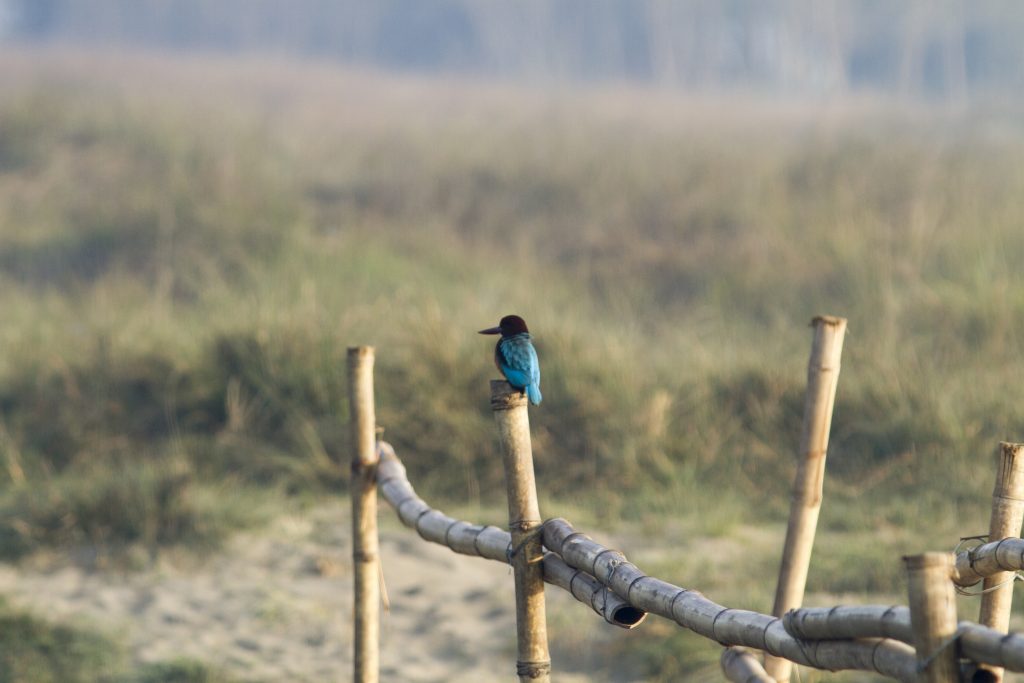
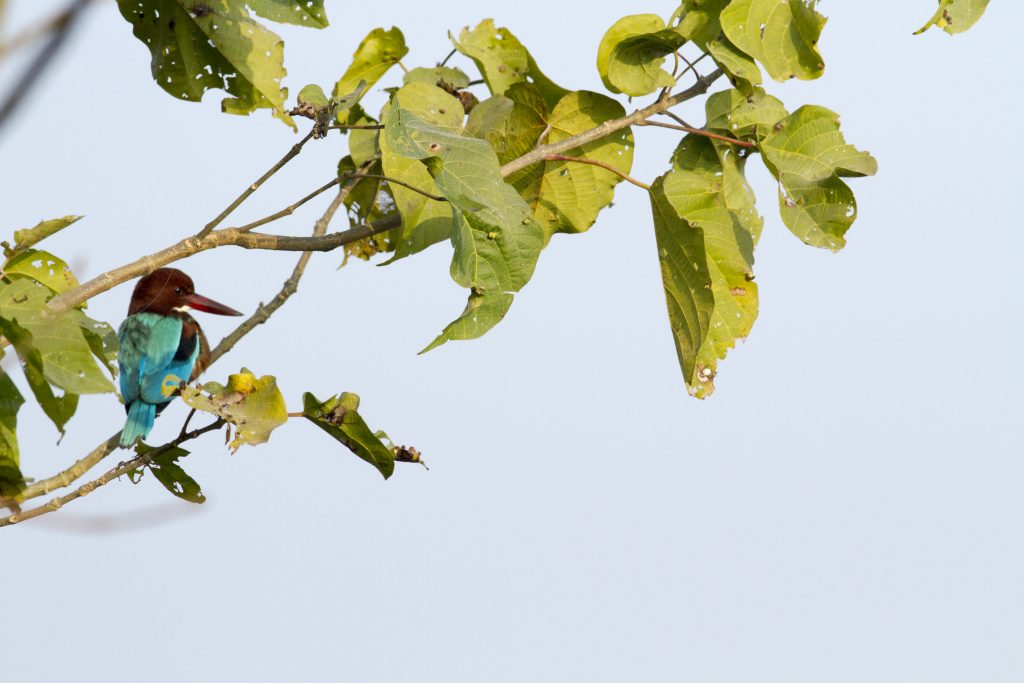
This eagle, holding a deer leg up on its perch, offers evidence of a recent tiger kill nearby.

Back at Sapana, we had the opportunity to watch elephants taking dust baths as part of an attempt to start a “free-range” elephant program on an island-like space owned by the lodge:
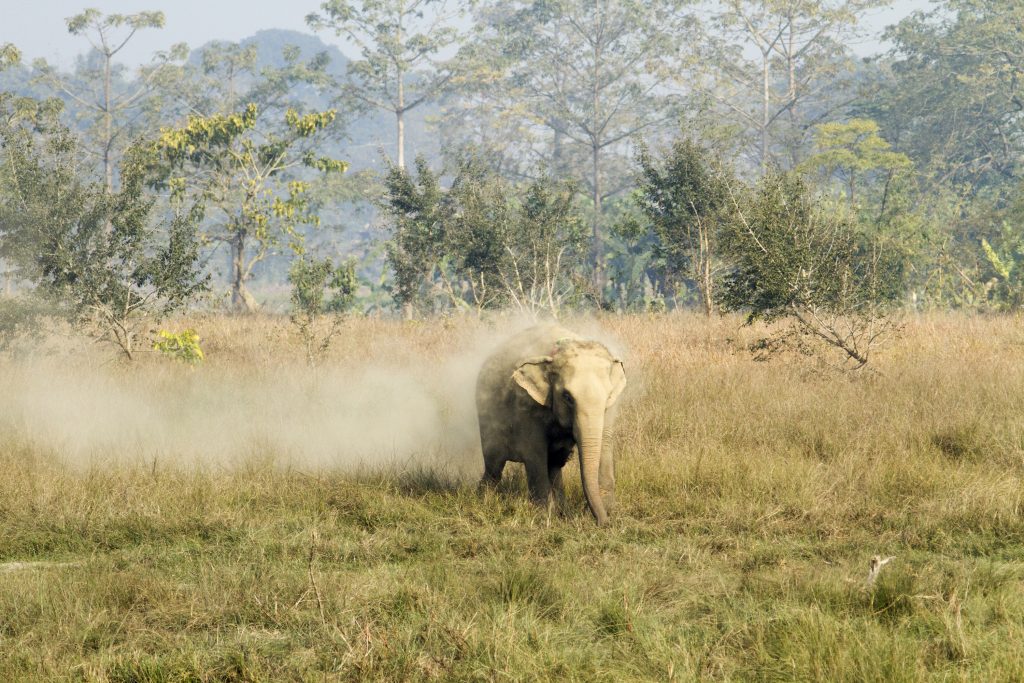 (Simon photo credit)
(Simon photo credit)
After a good night’s rest,
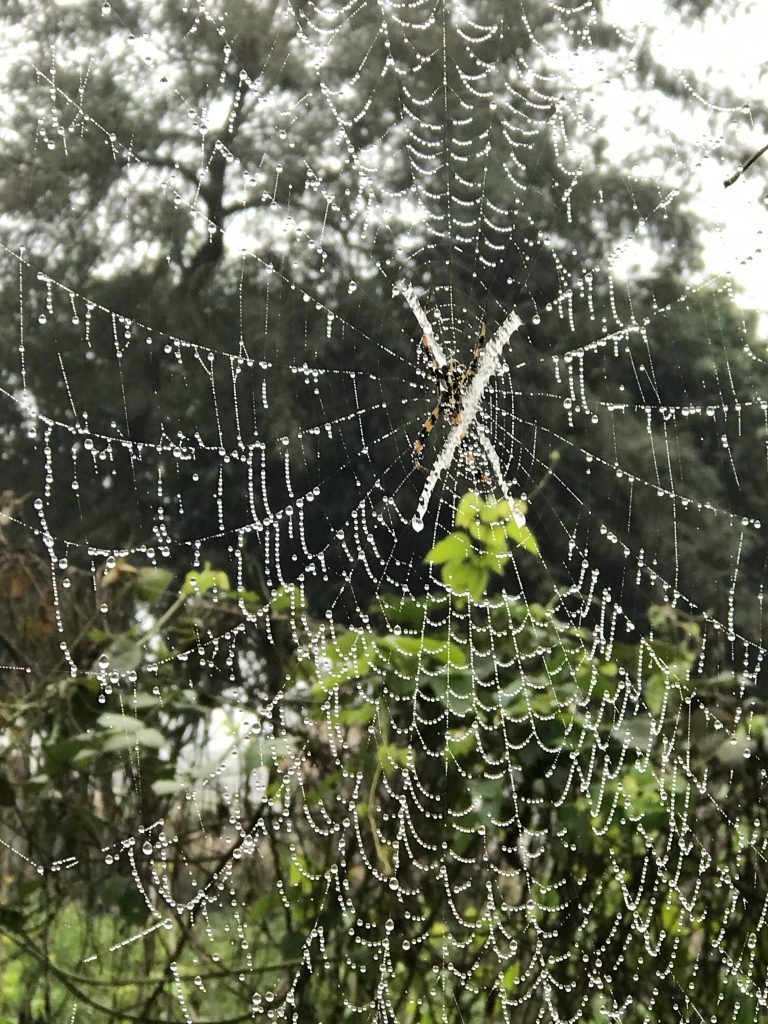
we went back to the park via the river, with many marsh muggers and gharials among the birds along the banks.
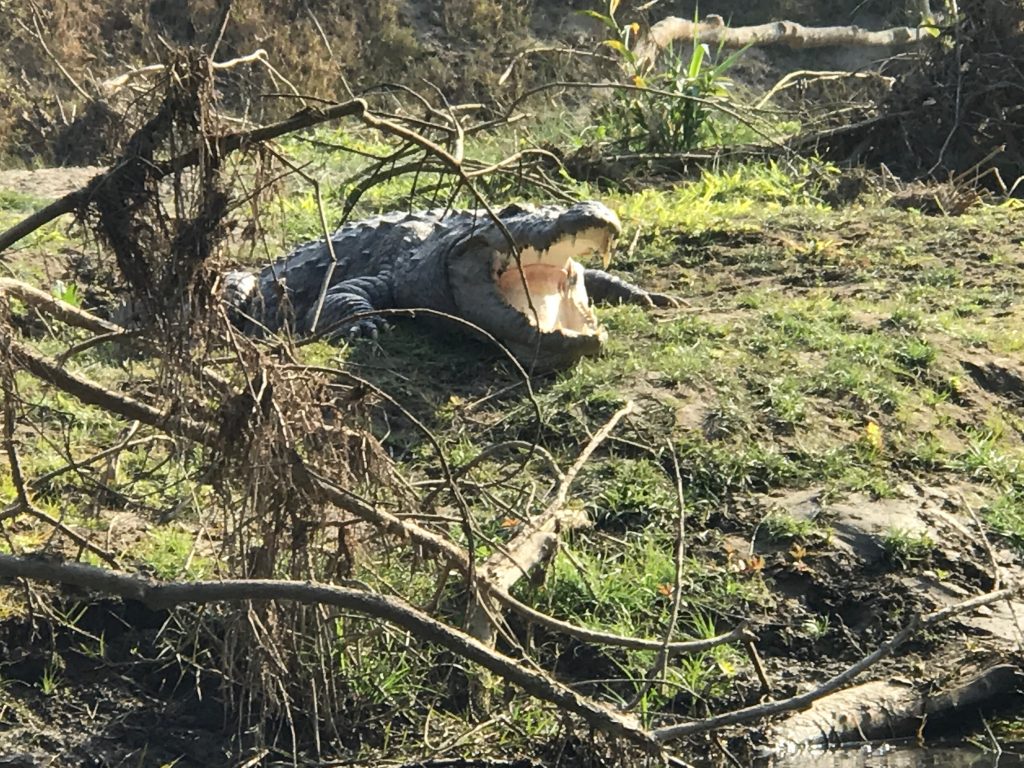
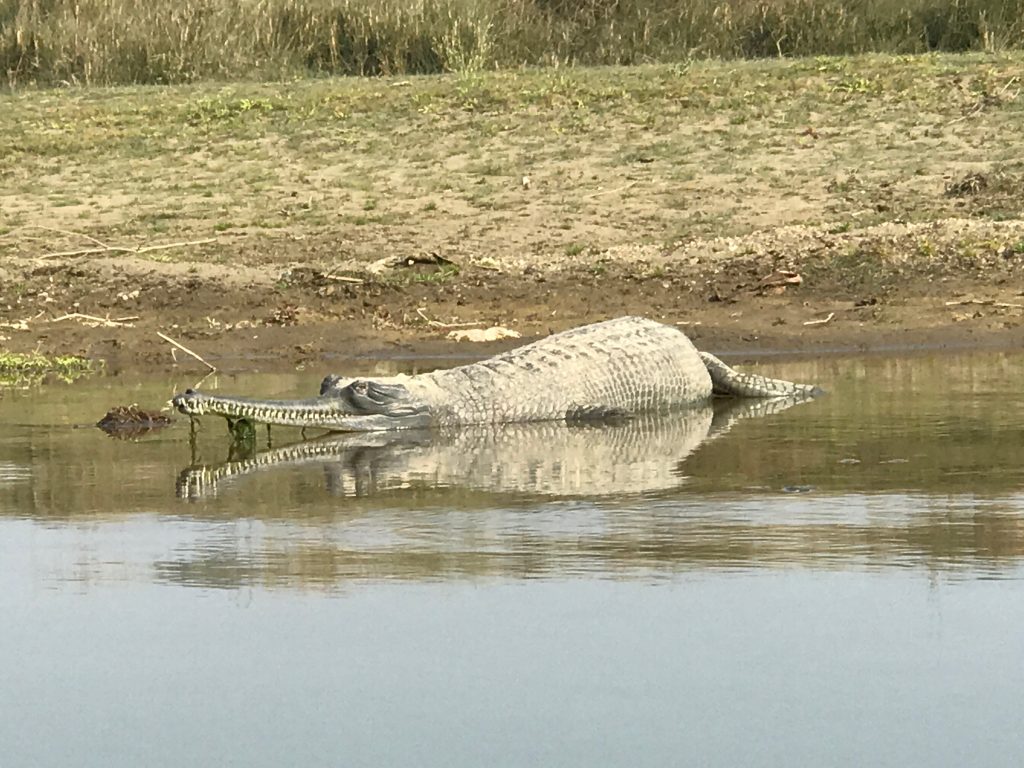
The marsh muggers have shorter snouts and are carniverous; the gharials have long elegant noses and feed mostly on fish.
We learned so much on this trip from our guide Makunda–he shared a wealth of information, not only about birds and mammals, but also about plants and insects.
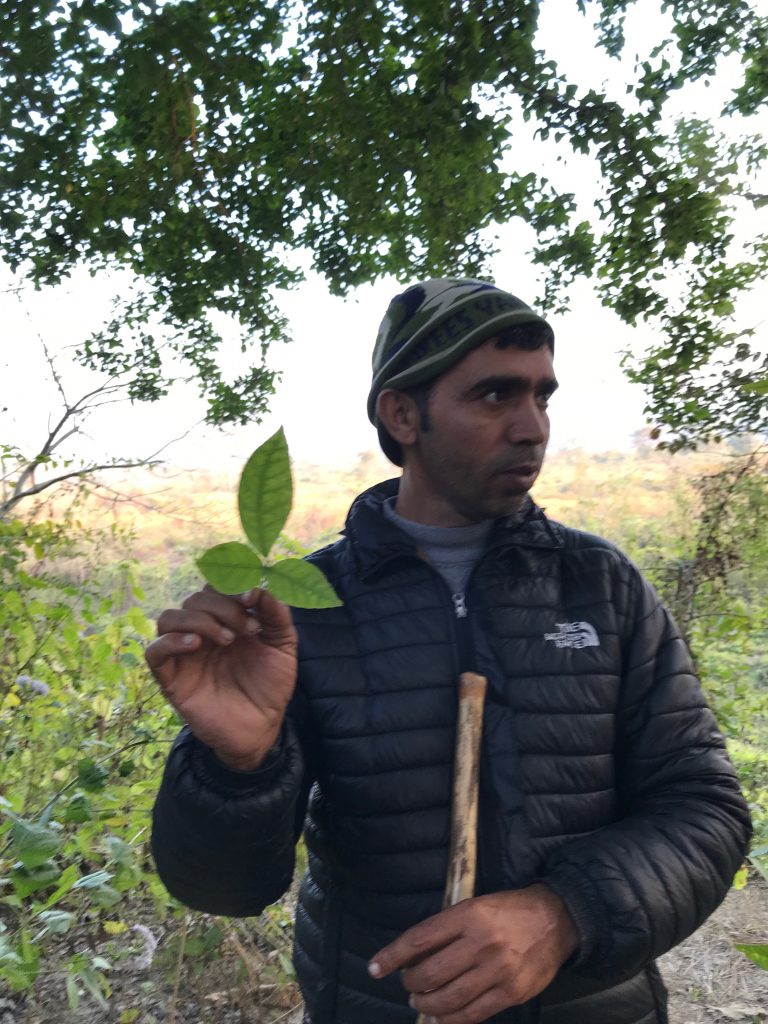
Here, Jeremy stands on a fallen tree with Makunda, who was trying to see the tiger who had just roared nearby–until he started wondering what Jeremy was up to.
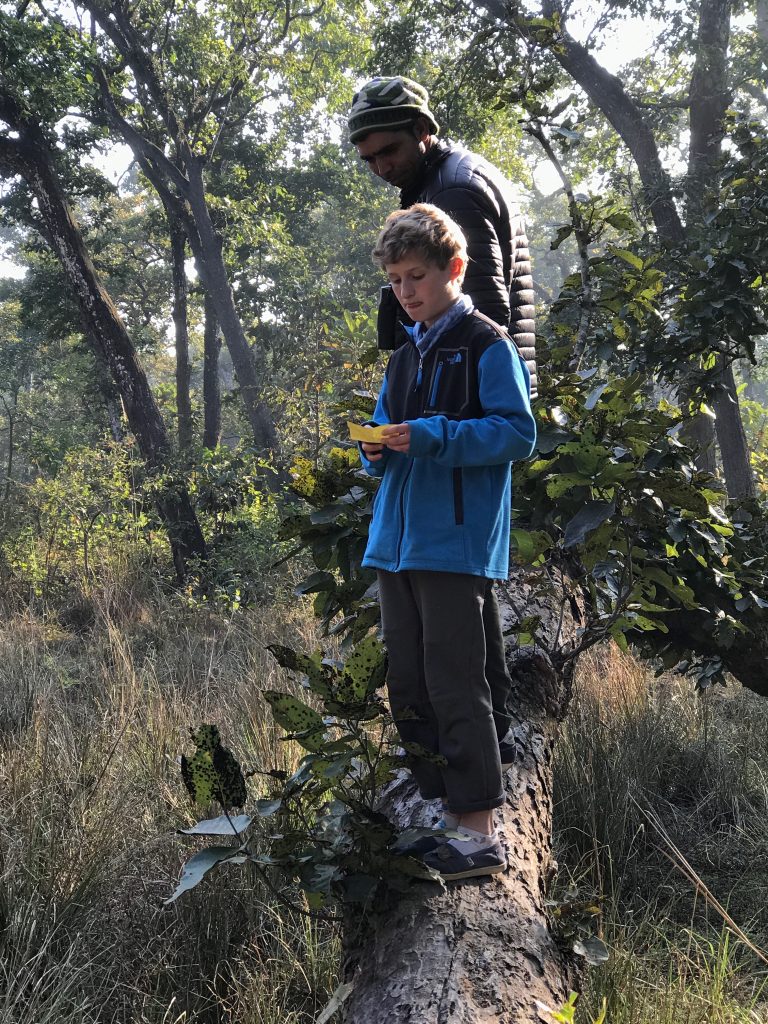
Some of the termite nests were as big as Jeremy:
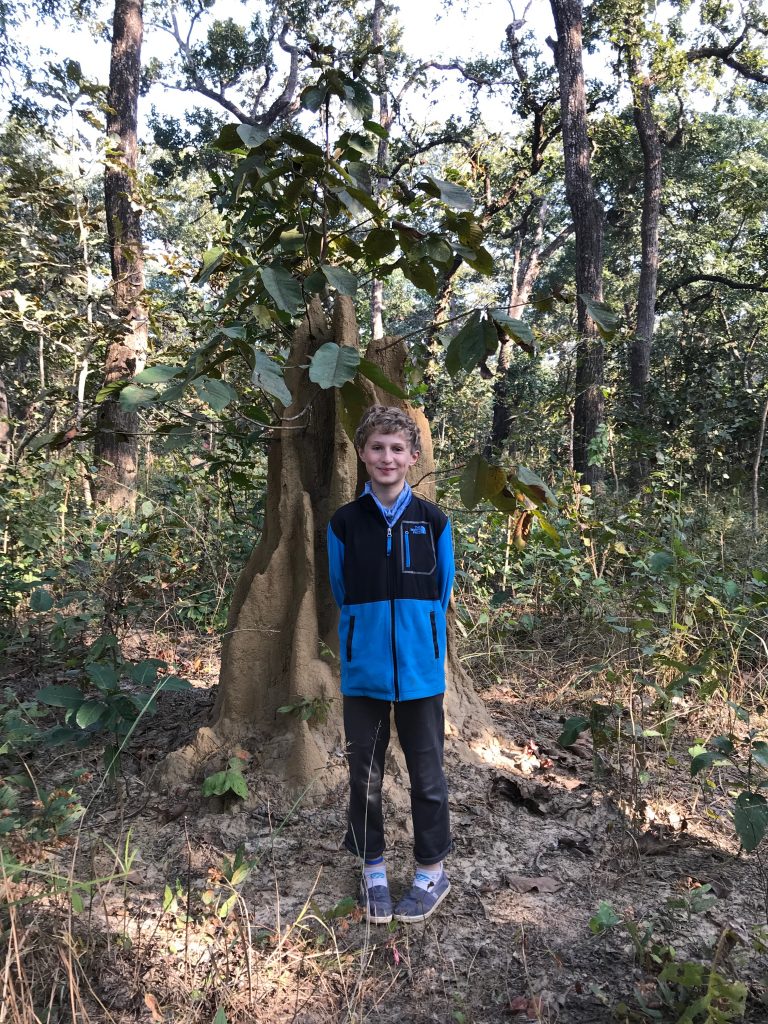
One of my favorite stories from Makunda was about the interrelations of termites with other elements of the ecosystem. He showed us mud “highways” up the trunks of trees that the termites were consuming–they use the mud for protection as they travel, so that birds can’t pick them off. The nests undergo continuing construction over a number of years (unless the nest is attacked), with internal columns created for air-conditioning and other effects.
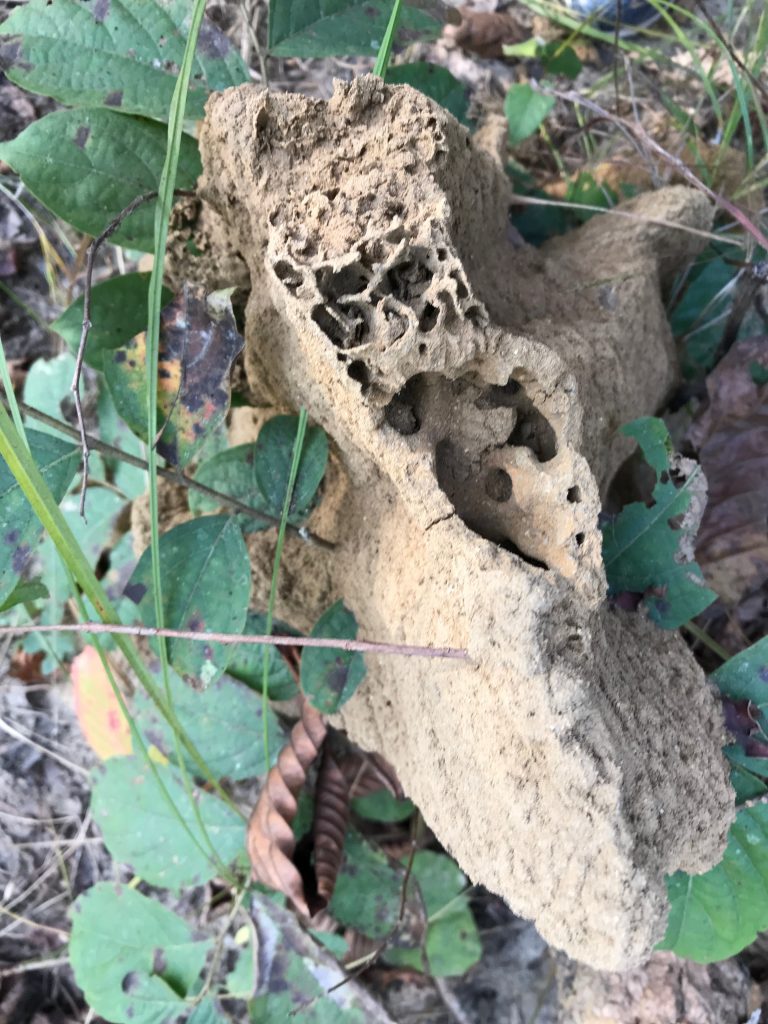
Sometimes snakes (cobras, I think) come and lay eggs inside a termite nest, knowing that the termites will maintain a constant temperature to help hatch the eggs–and once the baby snakes come out, they can feed on the termites all around them. Bears will sometimes come and destroy the nests in order to snack on the termites as well.
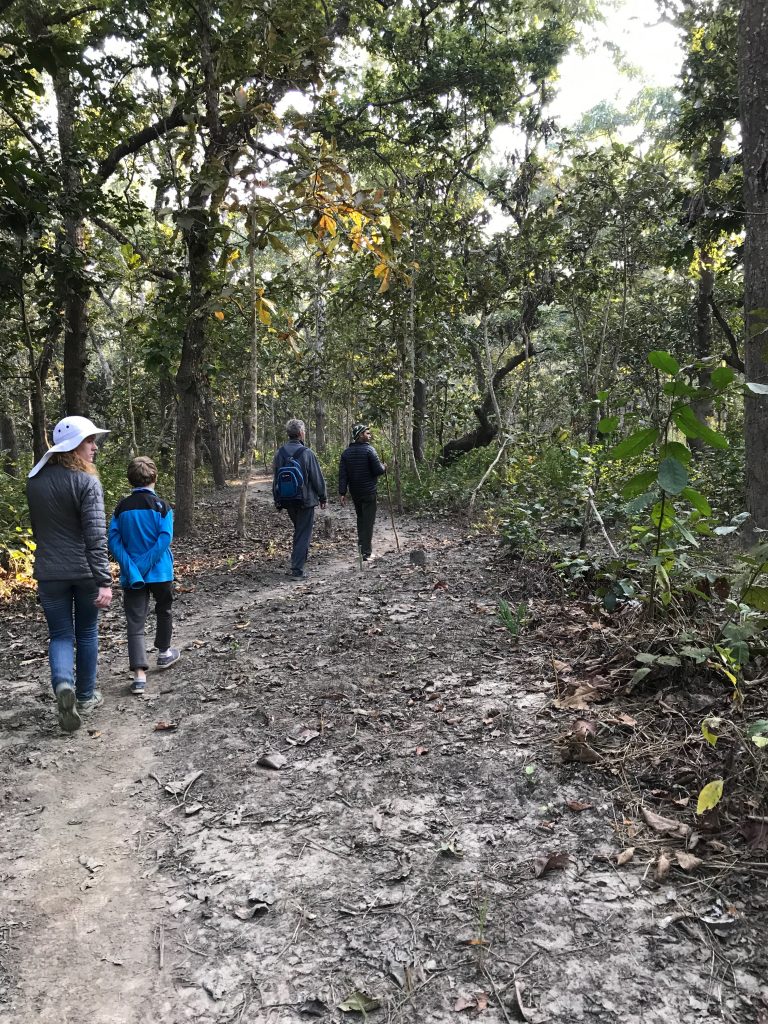
On a second trip with Makunda, we came across fresh tiger prints (on top of recent deer prints) and both fresh and old marks on trees. It was kind of a thrill to know that even if we couldn’t see the tiger, the tiger was probably watching us.
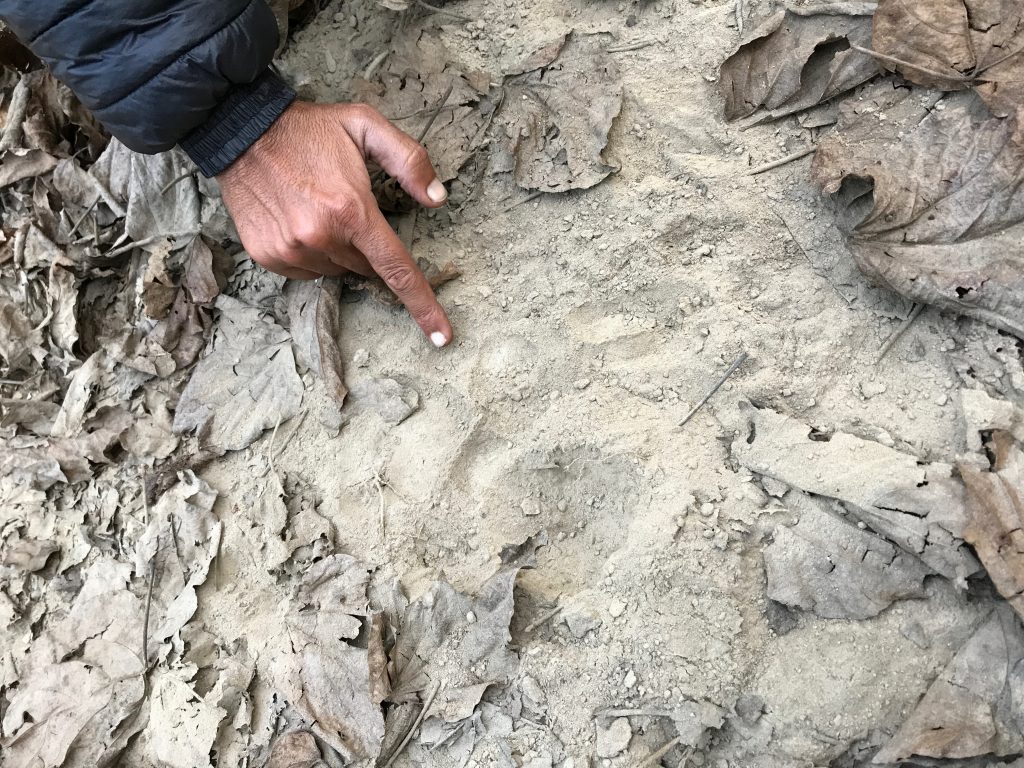
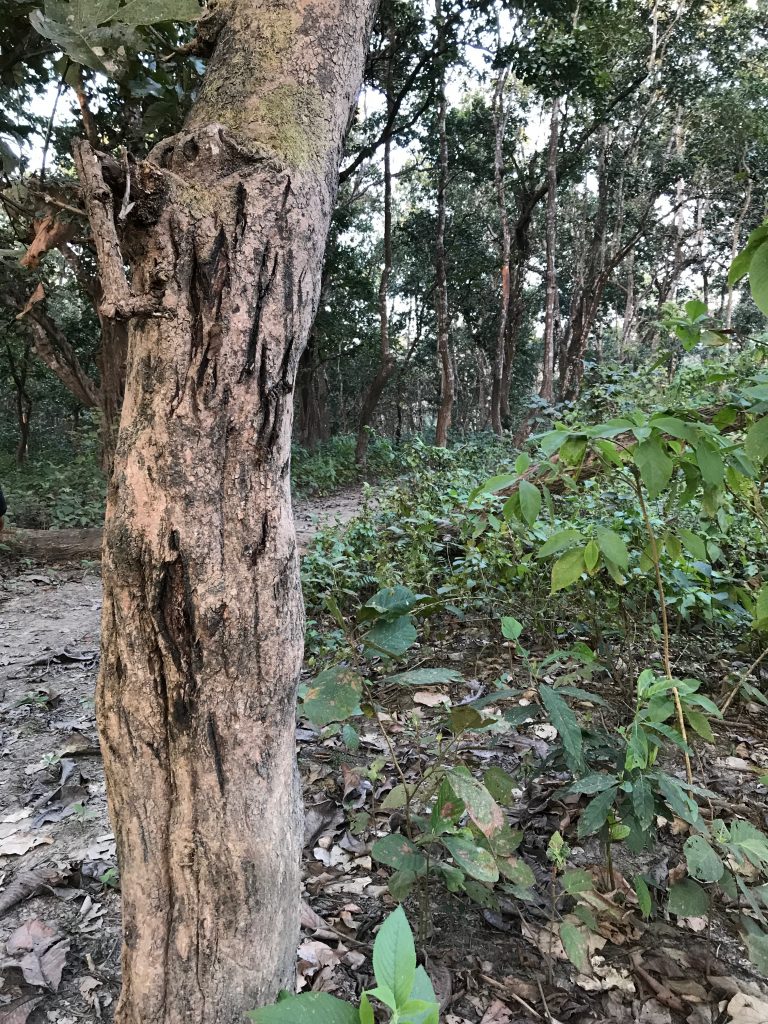
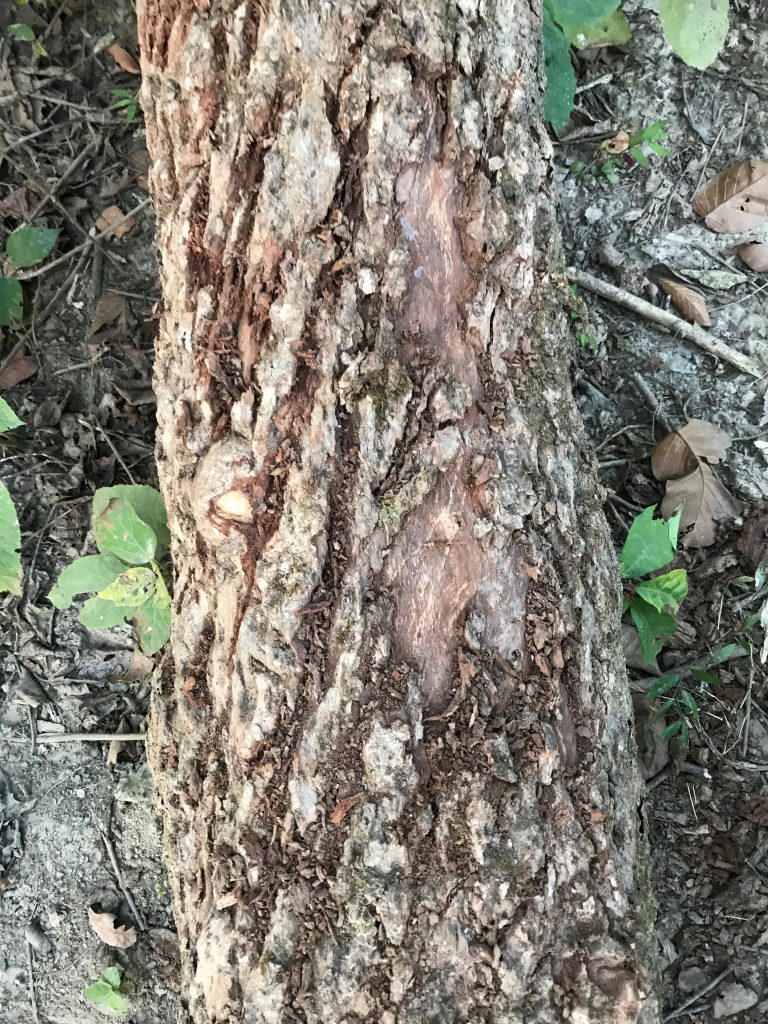
Certainly when a pea hen took off nearby with a loud whirring of wings, we all jumped a few feet in the air….
